The Image Of Research Past Exhibitions
Still Image Category Heading link
-
First Place
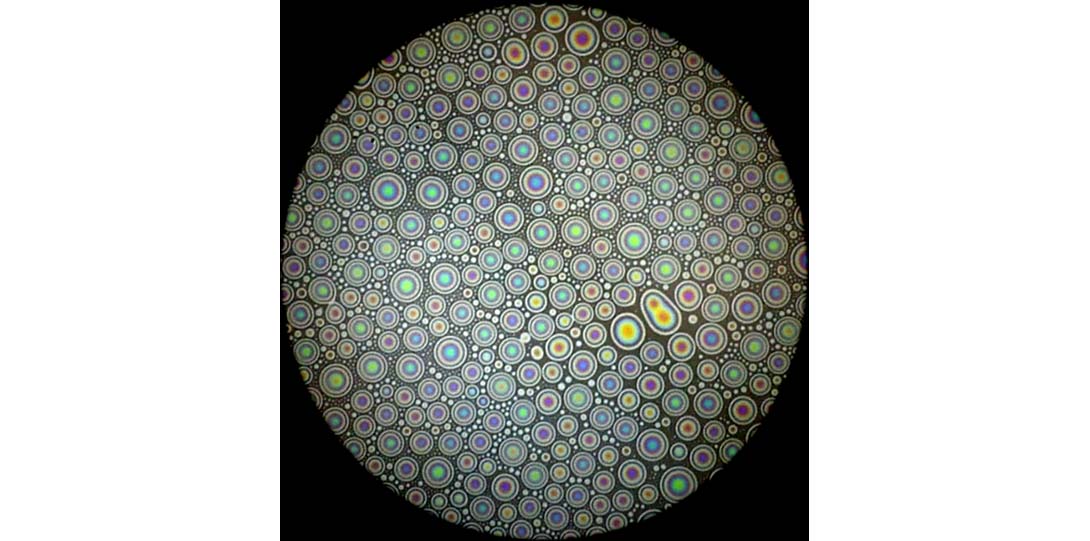 Meghan Quigley
Meghan QuigleyOil Marbles on Water Interface
Submitted by: Hassan Bararnia
Program: Mechanical Engineering
Division: Engineering, Mathematics, and Physical SciencesDescription: Rainbow-type interference is a ubiquitous part of our daily life, explaining colorful oil spillage or a sunlit soap bubble. When light strikes a thin surface with thickness smaller than the wavelength of light, the reflected light waves from upper and lower boundaries of the surface can reinforce each other, giving rise to an intensified color depending on the surface’s thickness. A thin aqueous film with a varied thickness or curvature-like bubble can lead to the formation of colorful patterns. Based on the same mechanism, an oil spill on water exhibits fringes due to its uneven thickness and different refractive indexes compared to water and air. In recent years, a large number of studies have been focused on removing oil spills due to their damage to the ecosystem. Having detailed information about the evolution and dynamics of oil droplets at the water-air interface by the presence of active molecules enables experts to propose better strategies to these efforts. The presence of surface-active agents promote the spreading of oil and increase the frequency of coalescence events between them, leading to faster formation of oil films. The current snapshot demonstrates how tiny oil droplets float and merge at the water-air interface.
Second Place
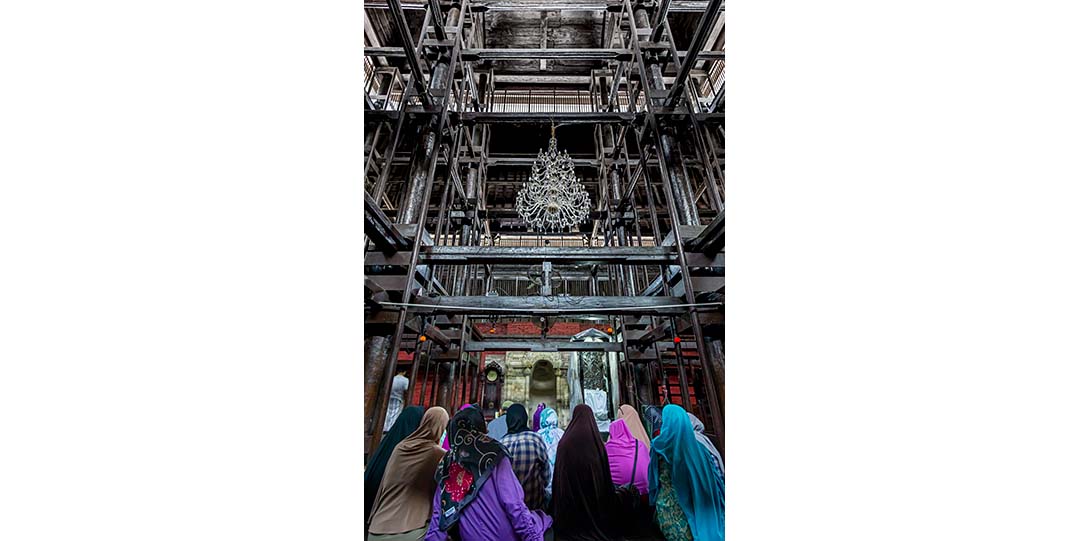 Al Foe
Al FoePillars of Faith
Submitted by: Al Foe
Program: Anthropology
Division: Behavioral and Social SciencesDescription: Colonialist and imperialist fantasies often envision archaeological sites as ruins, evoking abandonment in the popular imagination and a perceived distance from modernity, thus erasing indigenous voices for whom these sites are sacred and/or religious. In my study of 15th-19th century mosques, I find that most Early Modern mosques in Java have been in continuous use since their construction centuries ago. Built by early Muslims who likely existed in dispersed diasporas amongst a backdrop of Hindu-Buddhist political and religious majorities, these early mosques have since been renovated and expanded to fit the needs of their current congregations. However, in most cases, the soko guru––massive teak pillars that form the original foundations of the entire mosque––still stand. While the numerous renovation events offer unique analytical challenges to archaeologists, the “lived” nature of these mosques allow insights into how religious spaces were used centuries ago. This picture was taken at Masjid Agung Sang Cipta Rasa, a 15th century mosque located in Cirebon, West Java, where thousands of people from all over Java still visit every day as pilgrims. This picture, and my research, would not be possible without the generous help of colleagues and friends from the anthropology department at UIC, Universitas Indonesia, and the caretakers of the many mosques we visited together.
Third Place
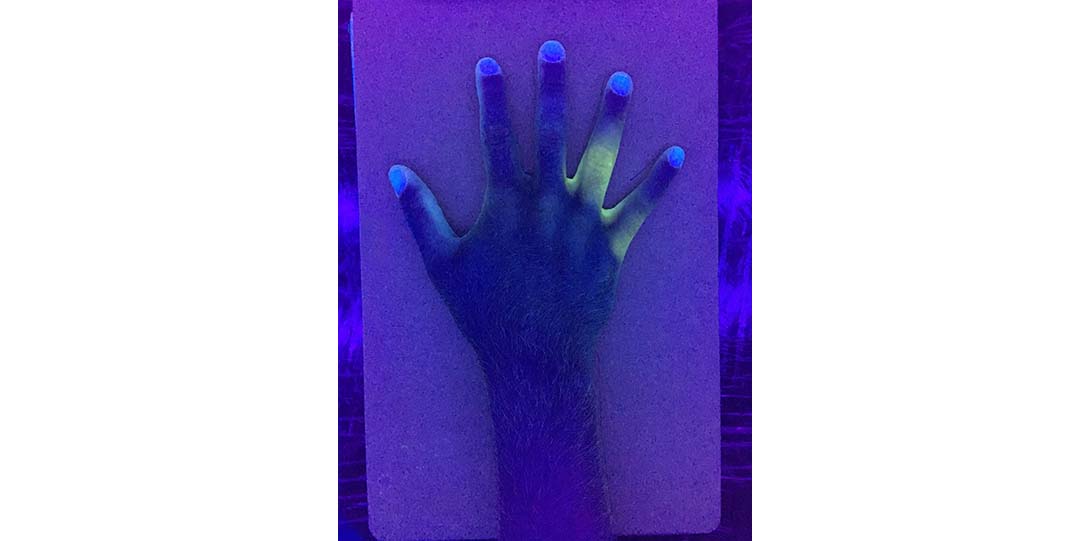 Will Cejtin
Will CejtinDermal Exposure as a Result of Glove Penetration
Submitted by: Will Cejtin
Program: Public Health Sciences
Division: Life SciencesDescription: The goal of my research was to characterize dermal exposure to the hands as a result of glove penetration. Glove penetration is defined as a contaminant entering the glove via splash-back over the glove cuff and/or tearing, puncture, or abrasion of the glove material. To do so, I devised a simple dish-washing simulation during which participants put on nitrile gloves and washed laboratory glassware for 10 minutes using a fluorescein solution contained in a large plastic tub. Following the simulation, gloves were removed and the hands were analyzed for dermal exposure (i.e. fluorescein solution on the hands), which entailed using a fluorometer to determine the mass of dermal contamination and black light image analysis to determine the surface area of contamination. The fluorescein solution fluoresces under black light (as shown in this photographic image), allowing me to then use Adobe Photoshop to determine the surface area of fluorescein contamination on the hands. My research indicates that dermal exposure does occur via glove penetration, and that dermal exposure modeling and glove selection processes must consider this exposure pathway in order to effectively protect worker health and safety.
Honorable Mention
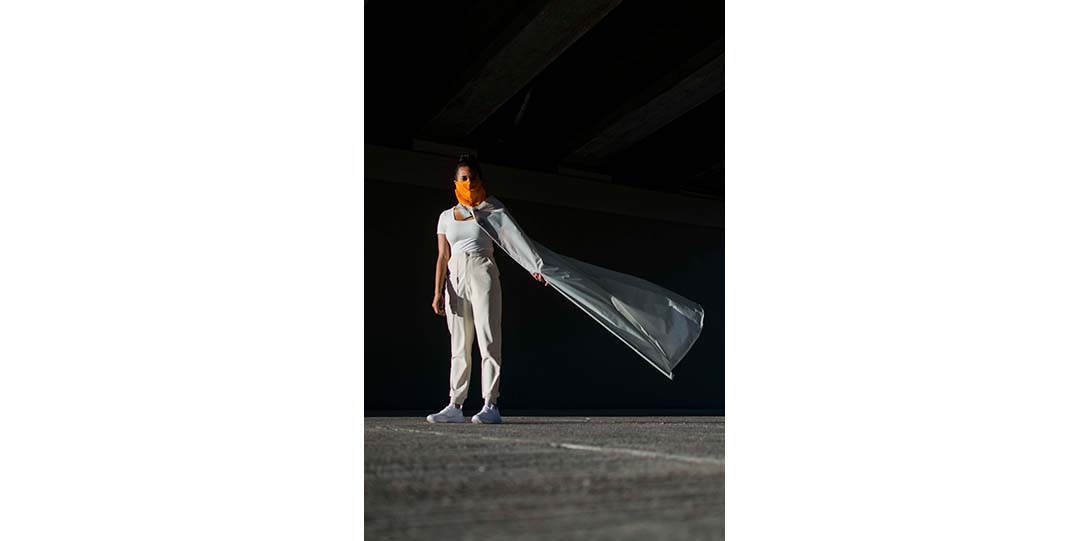 Lafayette Doty
Lafayette Doty6Cape
Submitted by: Lafayette Doty
Program: Industrial Design
Division: Arts and HumanitiesDescription: The image that I am submitting has to do with starting a conversation on social distancing during the COVID-19 pandemic. Being a design student, we were tasked with designing for the pandemic and I wanted to tackle social distancing wearables. My idea comes from the concept of a superhero–which commonly represents qualities needed in a pandemic such as pride, strength, grit, and resilience. A common motif with superheroes is a cape, and I feel a long cape could be used as a guide to social distancing. A cape is an effective wearable due to the activated and deactivated state it holds. It can be temporary for short interaction when it’s difficult to social distance. Being your own superhero, you are effectively protecting yourself and others while wearing the cape and face mask (another popular clothing accessory of the superhero). This work represents my efforts at UIC towards studying and advancing low-fidelity wearable technology. The mechanism for the cape is a simple lightweight flexible dowel and string when activated–so no actual technical workings. My work revolves around finding delight in manual interaction and play.
Honorable Mention
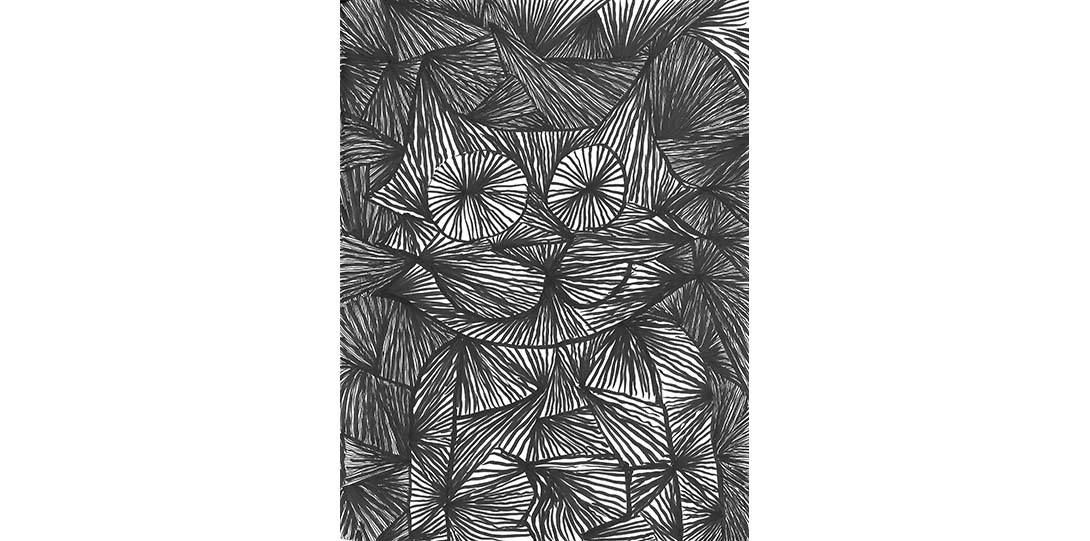 Erik Wenzel
Erik Wenzeluntitled (cat)
Submitted by: Erik Wenzel
Program: Art History
Division: Arts and HumanitiesDescription: My research is focused on mental illness and art. I come to UIC with a Master of Fine Arts and a background in painting and drawing. I continue to make my own work as I investigate the history of modern art and the lives of those deemed mad. This image represents my research in a number of ways. Like patients suffering from mental illness, I find art-making therapeutic (I too am a “mental patient.”) The pattern and repetition in the image was created through a soothing, automatic and meditative process. My abstract images often take on repetitive motifs that experiment with the kind of mark-making seen here. Drawing is another way of thinking; it is nonverbal and forms a counterpoint to textual thinking. Within the undulating field of triangles are two circles with spokes, almost like wheels. These turn out to be the eyes of a smiling cat. He (a kind of spiritual self-portrait I guess) is fully imbricated by his surroundings. The cat embraces and owns his madness. He uses it. Does the cat absorb the psychosis of the world in which he finds himself, or does it emanate from him? It is a dialectical relationship.
Honorable Mention
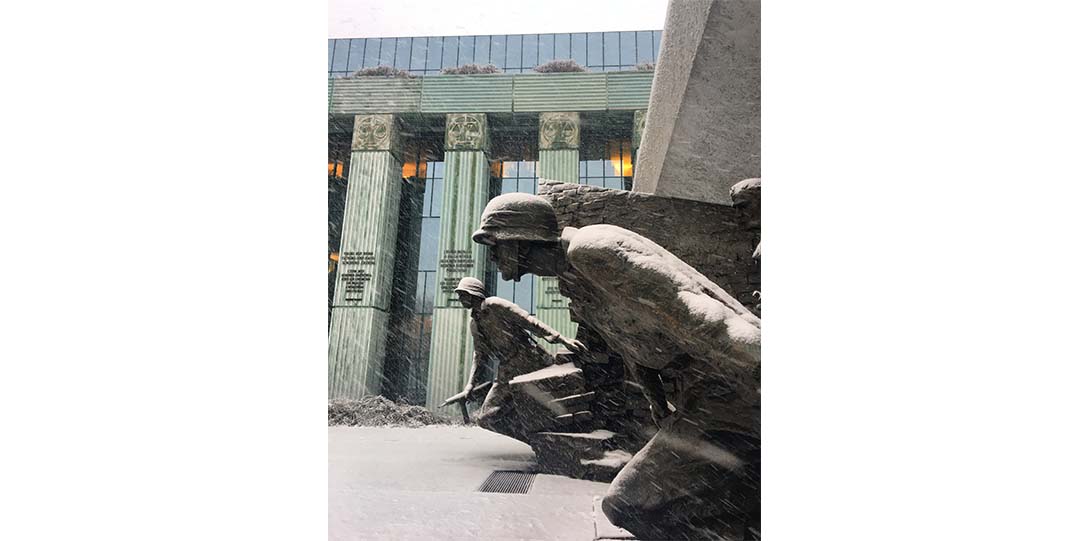 Frankee Lyons
Frankee LyonsEchoes of the Past (1944-2020)
Submitted by: Frankee Lyons
Program: History
Division: Arts and HumanitiesDescription: Against the backdrop of the first flurry of the season, the snow seemed to bear down on the soldier statues, making them come alive. Taken in Warsaw, Poland in January 2020, this image shows the monument to the Warsaw Uprising (1944) that stands in front of the Polish Supreme Court. The same building houses the archives where I conduct research for my dissertation examining post-war Polish Jewish life in the 1950s, a period defined by traumatic wartime memory and failed post-stalinist political liberalization. I was struck by this image in contrast to the Supreme Court building behind it. There are increasing measures in Poland to limit judiciary independence. As my research shows, history has long played an important part in Poland’s political landscape. This image represents how very alive historical memory remains in Poland–and that the battle over this memory continues in light of growing challenges to democracy.
Finalist
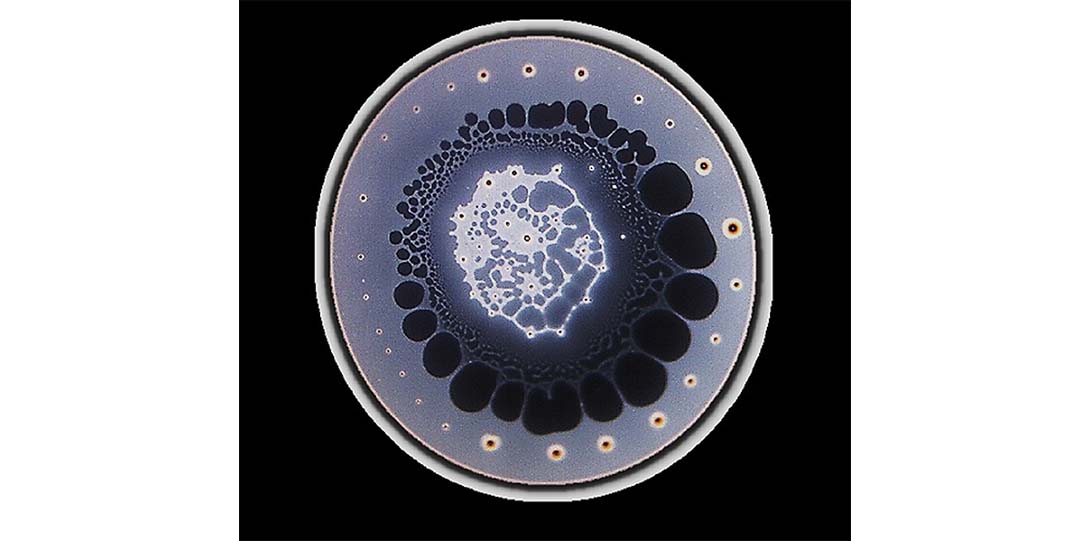 Lena Hassan
Lena HassanLife and Death of A Milk Foam Film
Submitted by: Lena Hassan
Program: Chemical Engineering
Division: Engineering, Mathematics, and Physical SciencesDescription: Foams are fragile objects, often stabilized by either surfactants like soap or detergents, or by proteins such as milk protein casein or its derivative, sodium caseinate. Like all foams, frothy latte too dies away, and to a large extent, the life and death of foams is scripted by forces that drive drainage (thinning) and rupture of foam films that separate gas pockets. Here we show a snapshot of a single foam film undergoing drainage. As light reflected from two liquid-air surfaces shows thickness-dependent variation in interference intensity for films less than 100 nm (thinner is darker), the snapshots taken in ODES-lab, ChE, UIC show that film thickness has become inhomogeneous, and the emerging thick-thin regions organize into a flower-like pattern.
Finalist
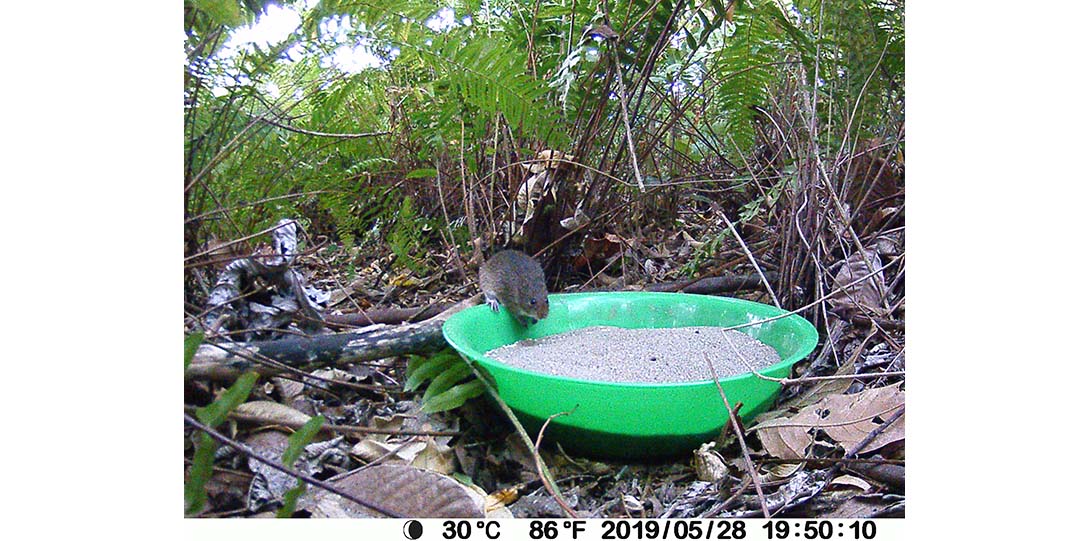 Luis Carlos Beltrán
Luis Carlos BeltránA Seed Predator, Revealed!
Submitted by: Luis Carlos Beltrán
Program: Biological Sciences
Division: Life SciencesDescription: This is a camera-trap photo of a Coues’ rice rat (Oryzomys couesi) visiting one of my food patches that I scattered throughout a tropical forest restoration experiment in Los Tuxtlas, Mexico. The idea was to use food patches to determine the foraging preferences these rodents have for different kinds of forest cover, with implications for forest regeneration. To be brief, the trays that have the least leftover food reflect conditions that are preferred by the seed predators (i.e., they like that sort of forest). It is through the use of camera traps that I was able to determine that these rodents are present in our experiment and that they are the primary seed predators. Through this research project I was also able to show that forest patches that lack canopy cover but are overrun by invasive ferns (observed in photo) are more likely to have these rodents, as indicated by how much seed they consumed from trays in those locations. This suggests that the negative impacts the invasive ferns have on regeneration are compounded by the protection they offer seed-consuming rodents.
Finalist
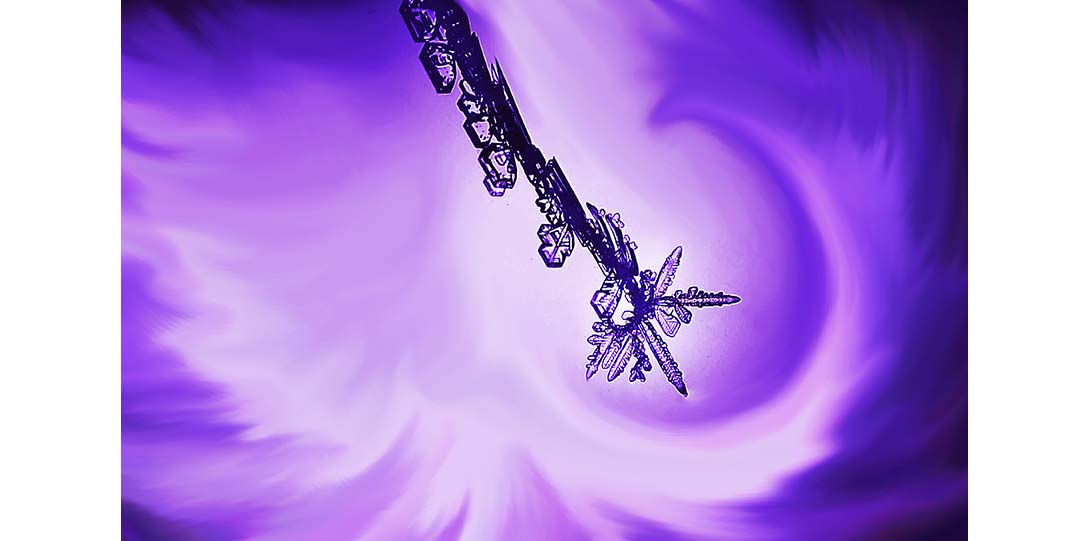 Rukmava Chatterjee
Rukmava ChatterjeeWinter ‘Fail’
Submitted by: Rukmava Chatterjee
Program: Mechanical Engineering
Division: Engineering, Mathematics, and Physical SciencesDescription: Ice crystal growth represent one of the finest examples of symmetry in nature amidst the chaos that encompasses it’s genesis. The birth of ice crystals is a song of ambient temperature and water vapor supersaturation with their growth being dictated by a marriage of non-equilibrium molecular dynamics at the ice/water and ice/vapor interfaces engendering a rich phenomenology of solidification behaviors under different environs. To elucidate the mechanism of ice crystal’s pattern formation and intertwined morphological instability, we have examined the growth of a single crystal from water vapor, focusing on the underlying physical processes that govern their growth rates and structure formation. This is what the current image (captured as a part of my ongoing doctoral research at UIC) intends to convey. To demonstrate the hypnotic beauty of this rare jewel amidst an unkind wintry wind, I have carried out experiments in a simulated cloud chamber under controlled frigid environmental conditions. The fundamental investigation of the life cycle of ice crystal will advance our understanding of the efficacy of novel materials in preventing ice/frost formation on functional surfaces, bringing us a step closer in defeating nature’s artist at its own craft.
Finalist
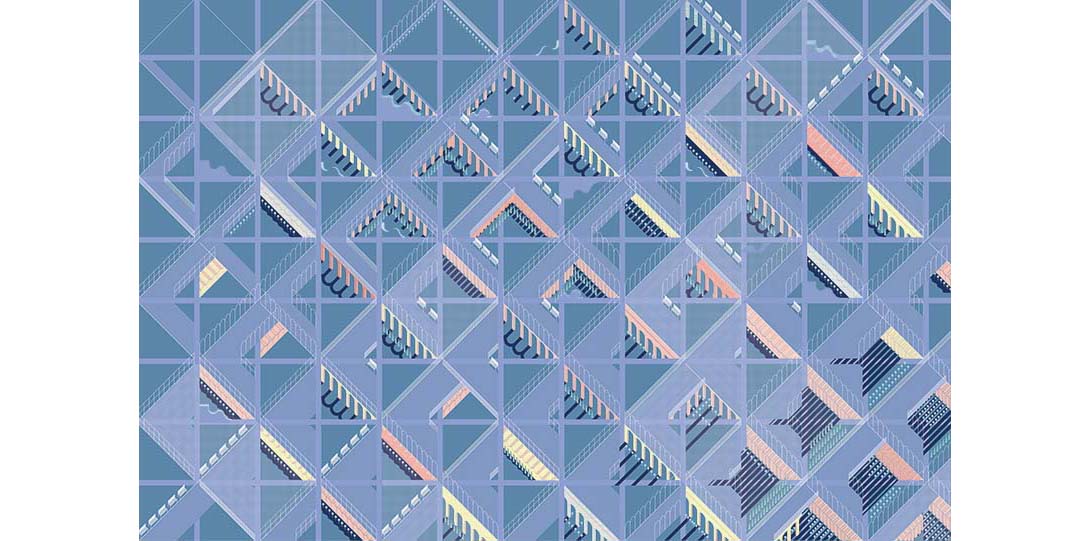 Meghan Quigley
Meghan QuigleyGridscape
Submitted by: Meghan Quigley
Program: Architecture
Division: Arts and HumanitiesDescription: From researching drawing techniques of grids and landscapes separately, this drawing showcases a gridscape, a type of drawing that combines grids with landscapes. By learning how to draw landscapes, this drawing explores a technique of drawing a grid to reconfigure elements of landscape. Through the action of combining, a new type of organization emerges. This new organization addresses architectural issues such as continuity vs. separation, solid vs. void, density, and repetition. This gridscape represents an exploration of the potential of drawing techniques and graphic space. Architecturally, this drawing does not represent a true site, but it suggests a multitude of interpretations as it contains recognizable elements, allowing for a possible context to emerge. Through this design process of researching drawing techniques and graphics, a design proposal for a public space can begin to develop.
Finalist
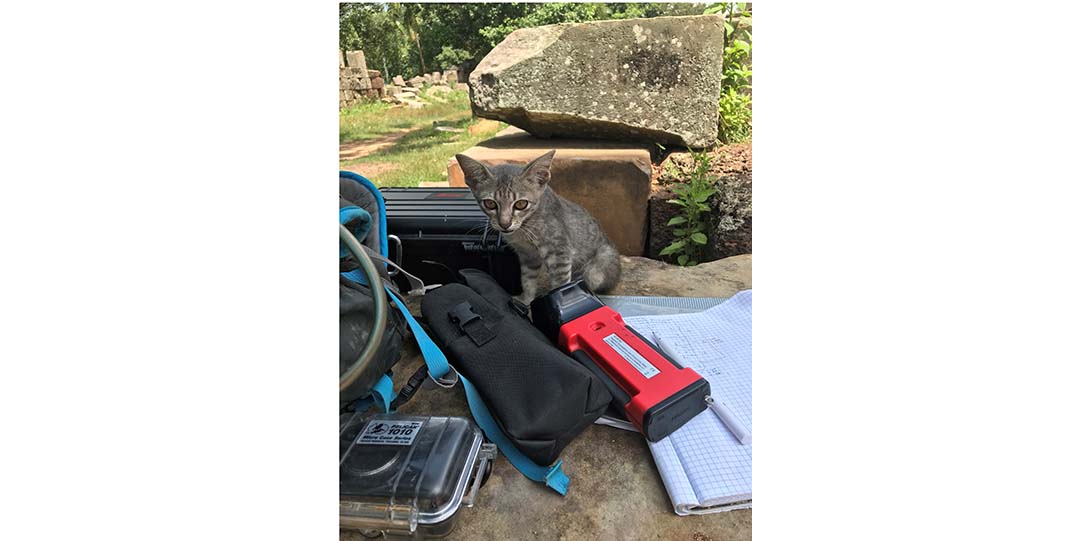 Kendall Hills
Kendall HillsTools of the Trade
Submitted by: Kendall Hills
Program: Anthropology
Division: Behavioral and Social SciencesDescription: Archaeology often conjures images of excavation trenches, trowels and brushes, and the collection of small artifacts. The methods that accompany these images are destructive in nature as archaeological sites are “dug up”, while artifacts are carefully documented but essentially removed from their original context. The archaeology of monumentality, however, often requires different strategies that are non-destructive to preserve the integrity of monumental architecture. In my study of sandstone temples from the Khmer Empire (9th – 15th c. CE), my research approach requires an array of non-invasive methods to investigate provincial temple production choices through an evaluation of their sandstone construction materials. My archaeological tool kit ranges from stereo cameras with laser range finders to calculate the volume of temple construction materials, to the mundane notebook and pen used to record the dimensions of individual sandstone blocks. Such methods allow me to engage and document Cambodian cultural heritage with minimal disruption to the temple site (and its surprising inhabitants) while maintaining the conservation of the monument. Through the non-destructive collection of this data I can begin to reconstruct the economics of sandstone temple production, which is critical to understanding the broader ancient economy of the Khmer Empire.
-
First Place
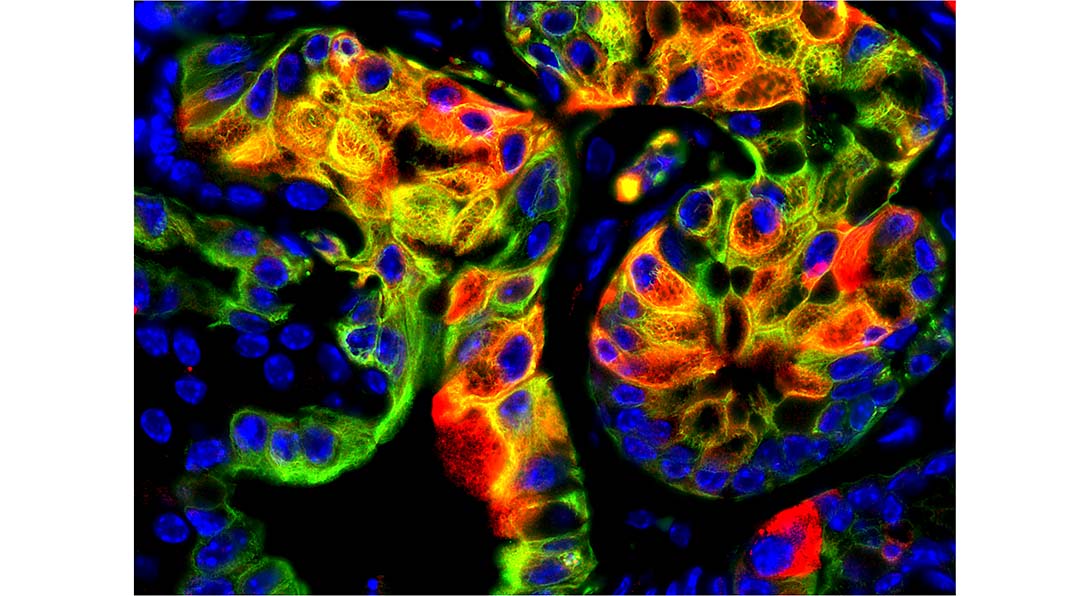 Danny Principe
Danny PrincipeCombination Immunotherapy in Pancreatic Cancer
Submitted by: Danny Principe
Program: Biochemistry
Division: Life SciencesDescription: Pancreatic ductal adenocarcinoma (PDAC) is a leading cause of cancer-related death with a median survival time of 6-12 months. As most patients present with advanced disease, the majority are managed solely through palliative chemotherapy. While select chemotherapies improve overall survival, nearly all patients will eventually progress on treatment. In our recent study, we determined that long-term chemotherapy leads to significant changes to the immunogenicity of pancreatic tumors, and sensitizes mice to multi-drug immunotherapy. In the corresponding image, we show tumor tissue of a mouse treated with a combination of chemo and immunotherapy stained by immunofluorescence. Specifically, tissues have been stained for Cytokeratin 19 (Green), a duct marker that will react with cancer cells, and Granzyme B (Red), a marker of cells being destroyed by the immune system. This image is indicative of a pronounced anti-cancer immune response, and suggests that the combination of chemo and immunotherapy may warrant therapeutic consideration in PDAC.
Second Place
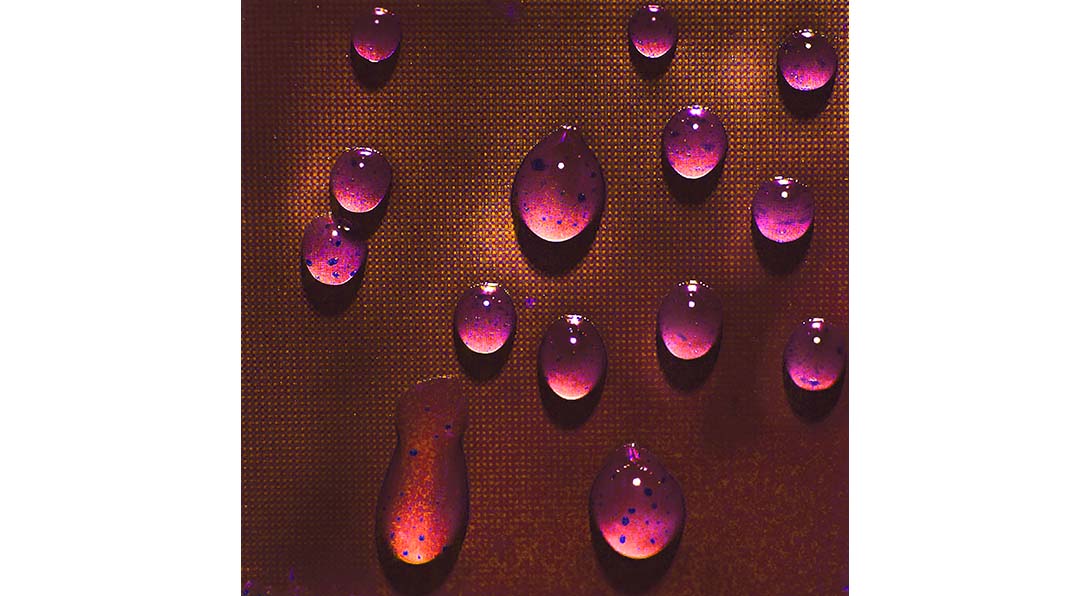 Rukmava Chatterjee
Rukmava ChatterjeeMist Heist
Submitted by: Rukmava Chatterjee
Program: Mechanical Engineering
Division: Engineering, Mathematics, and Physical SciencesDescription: While the earth’s atmosphere embodies zillions of gallons of water vapor, ironically, more than half of the world’s population faces daily water scarcity. Over the past few decades, researchers have come up with innovative strategies by tapping into this deluge of ambient moisture resource in an attempt to provide the world with ‘drinkable air’. However, most of these water-from-air devices suffer from the practical challenges of energy efficiency and durability. Motivated by this, we have developed a coating material for mining moisture from air in climates ranging from foggy to humid and that is what the current image (captured as a part of my ongoing doctoral research at UIC) intends to convey. To demonstrate this, I have carried out experiments in a simulated humid environment by cooling a hydrophilic textured surface coated with a naturally-derived waxy material. Stripped from air, water droplets show very low adhesion and effortlessly roll down the sub-cooled coated surface, thereby harvesting water. The locking of the waxy material within the surface features of the underlying solid substrate prevents its out-of-texture depletion by water and provides a ‘cool’ solution to quench the thirsty world.
Third Place
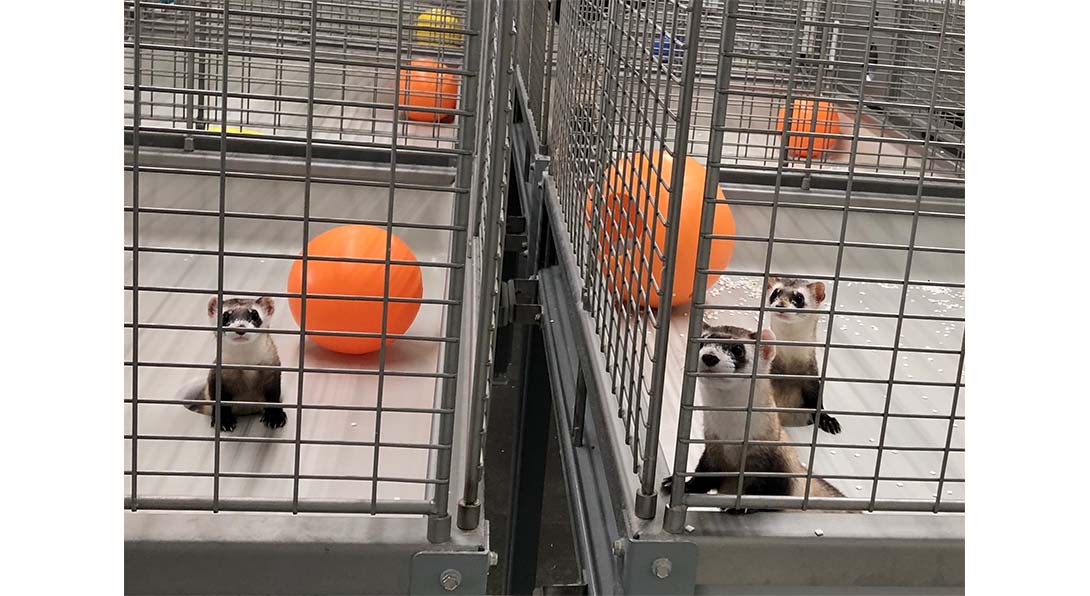 Emily Potratz
Emily PotratzReflection into Conservation
Submitted by: Emily Potratz
Program: Biological Sciences
Division: Life SciencesDescription: The black-footed ferret is a North American carnivore and one of the world’s most endangered mammals. Once widespread across the Great Plains, they were thought to be extinct in the 1980’s—until a small population was discovered in Wyoming. For the past 35 years, biologists have been working to reestablish self-sustaining wild populations with management and breeding efforts. However, full recovery of the species has yet to be reached due to disease, limited habitat, and a declining fertility trend in the breeding program. My research explores how the ferret’s fertility and reproductive success can be improved naturally, by reinstating the behavior of mate choice into conservation breeding. Male and females explored a “Y” maze with olfactory cues from two opposite sex potential mates at either end. We predicted scent (i.e. feces, urine, pheromones) would contain the necessary information about health and compatibility an individual would need to determine mate quality. In addition to knowing which mate was preferred, we examined olfactory cues, hormones (stress and reproductive), gut health, and genetic profiles to see what constituted a quality mate. This photo is a pair emerging from their nest box for feeding, with a curious neighbor next door.
Honorable Mention
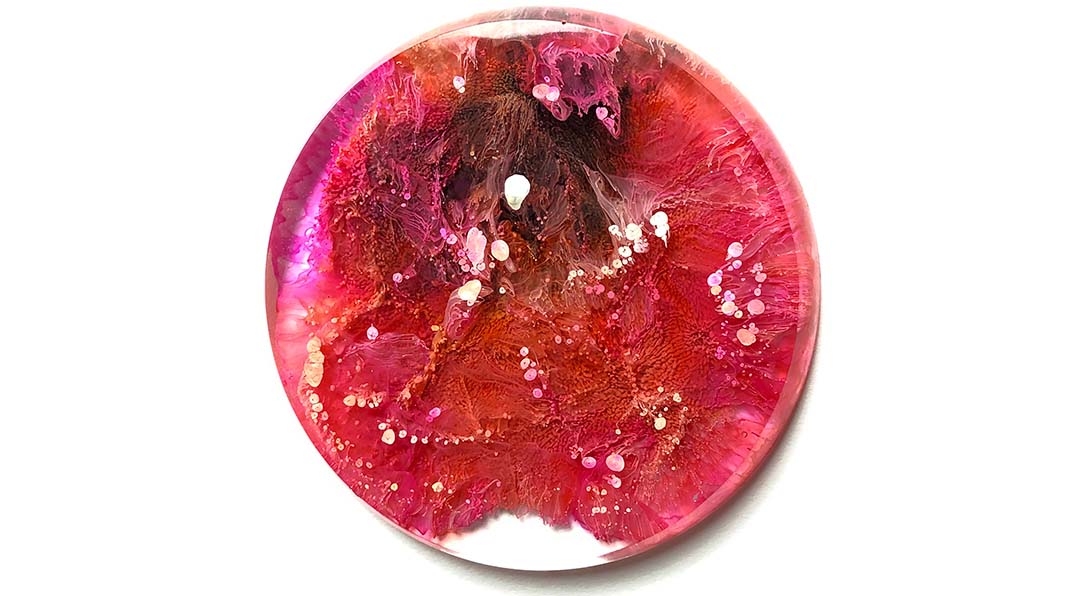 Soorin Chung
Soorin ChungSerendipity
Submitted by: Soorin Chung
Program: Industrial Design
Division: Arts and HumanitiesDescription: Chimero (2012) stated the following in “The Shape of Design”: The simplest form of delightful surprise is serendipity, when we are presented with an unexpected relevancy. Serendipity in design provides a new viewpoint that makes us look at what we are doing in new ways. (p.104) I became curious about the serendipitous moments that can happen while creating an object from the viewpoint of a designer. For my 2018-2019 academic year, I experimented with an unfamiliar material “epoxy resin” and experienced serendipitous moments where I came to see interesting and unique things that resin can do. Also, from the start of my experimentation, I was very much interested in the concept of “Capturing Moments”. “How can we capture meaningful memories? The fact that resin was solidifying the liquid aspects of the ink was one of my serendipitous and coincidental moments. It was also very interesting to see the unusual reaction of ink and resin. Using the disk molds allowed the resin and ink to achieve more depth and layers. They also looked similar to a bacteria, sea moss or cells as if I was looking into a microscope or even a kaleidoscope. Looking into its own little resin world was fascinating.
Honorable Mention
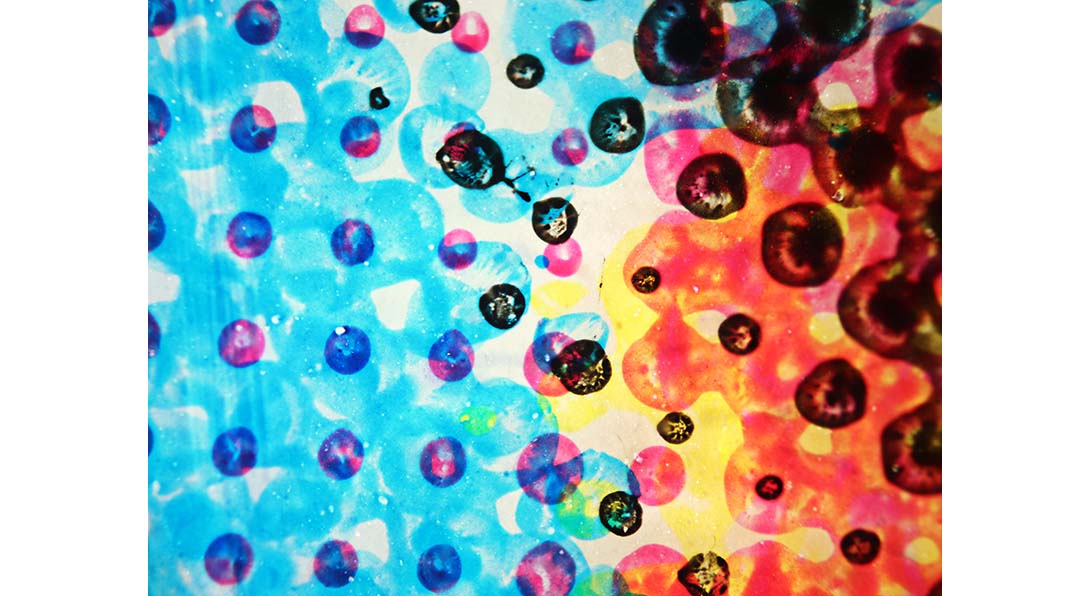 Rachel Sandquist
Rachel SandquistColorful Tape
Submitted by: Rachel Sandquist
Program: Forensic Science
Division: Behavioral and Social SciencesDescription: Tapes, like duct tape, are items that most people encounter daily without giving them a second thought. Criminals however, have found nefarious uses for tapes. They have found tapes to be useful as bindings for hands or as construction material for improvised explosive devices: A tape’s use is limited only by a criminal’s creativity. My research aims to expand upon and optimize the way tapes are analyzed in crime labs through the use a microspectrophotometer. This instrument measures a sample’s electromagnetic absorption in the ultraviolet or visible ranges. More simply, this instrument quantifies color. As this image of the surface of a piece of duct tape shows, a tape’s colors are surprisingly unique. The observation and quantification of these unique colors has the potential to increase a forensic scientist’s ability to identify and discriminate between tape samples. At only 100x magnification, the vivid colors of this otherwise unassuming tape pop out and exemplify why careful consideration of a tape’s color may help to answer the “who dun it?” of a crime.
Honorable Mention
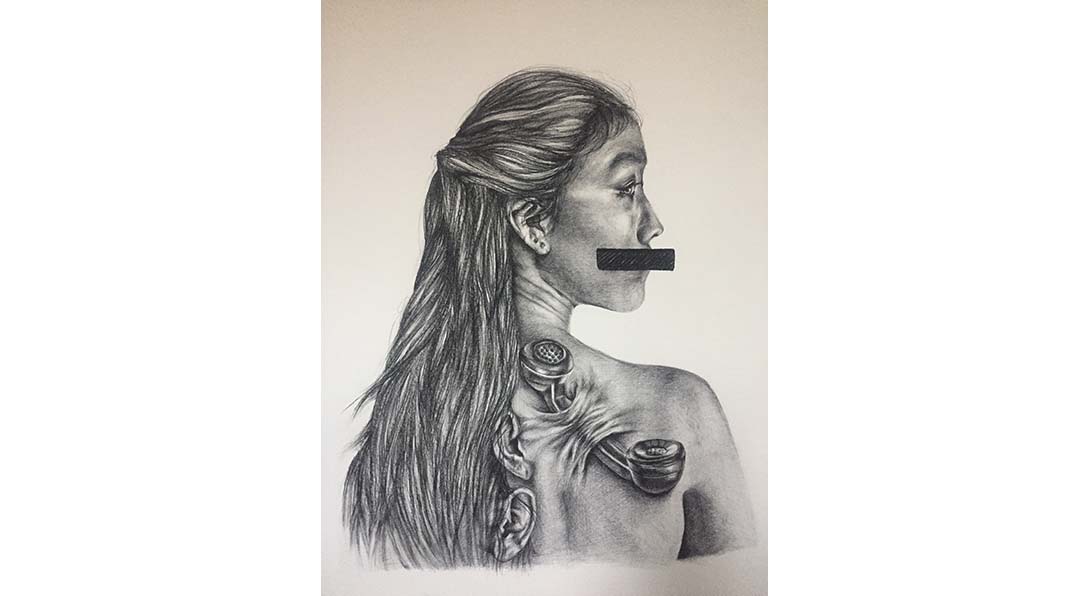 Emily Nakamoto
Emily NakamotoCommunication with Triers of Fact
Submitted by: Emily Nakamoto
Program: Forensic Science
Division: Behavioral and Social SciencesDescription: My research focuses on a forensic scientists’ testimonial verbiage. A single criminal trial can require multiple expert testimonies from different forensic disciplines such as Firearms, Latent Fingerprints, and Questioned Documents. In court, forensic scientists tell the juries about their evidence analysis and then ultimately state a final conclusion. Each forensic discipline endorses testimonial verbiage vetted by their particular consensus standards. For example, Questioned Documents currently abides by conclusion terminology standards developed by the Scientific Working Group for Forensic Document Examination (SWGDOC). In contrast, Latent Fingerprints adheres to consensus body standards vetted by their own separate entity. With each discipline using different terminology in court, jurors can easily be confused about the relative importance of the evidence presented. My research project will determine the efficacy and reliability of the current SWGDOC conclusion terms by assessing jury-eligible participant’s opinions based on a series of surveys. This 2’1” x 3’ charcoal drawing, which I rendered in my apartment, represents my research aims and thus was inspired by strained communication between experts and triers of fact. There are forms of communication (e.g. telephone, excess ears, censorship bar) exuding out of the self-portrait to highlight my thesis’ struggle of assessing articulation and reception.
Finalist
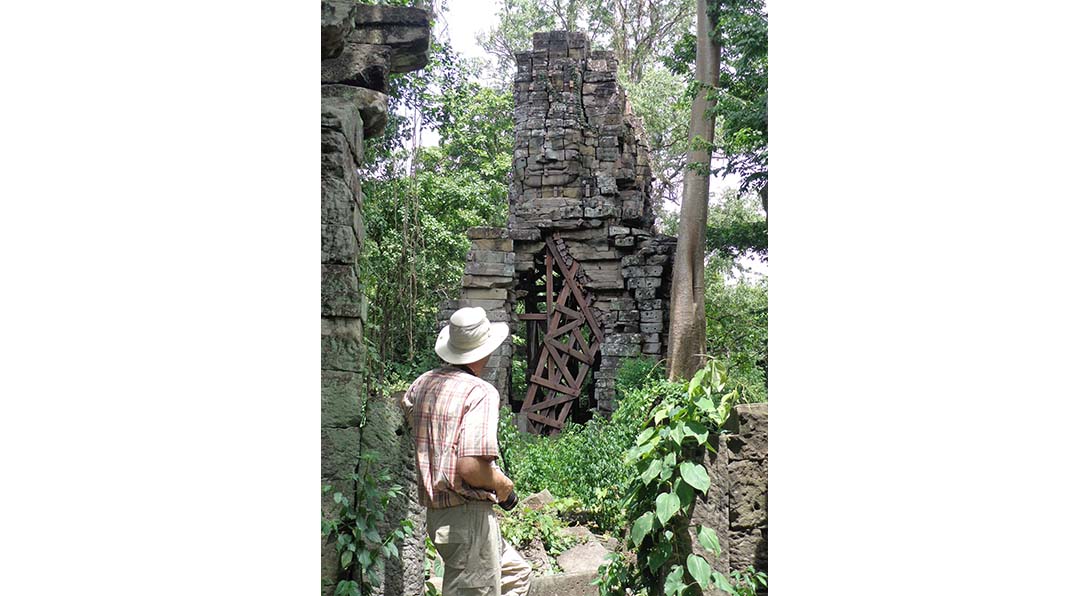 Kendall Hills
Kendall HillsMonumental Control
Submitted by: Kendall Hills
Program: Anthropology
Division: Behavioral and Social SciencesDescription: This image was captured during a field campaign to the province of Banteay Meanchey in northwest Cambodia. The temple in my image represents one of the many examples of monumental architecture established throughout the Angkorian Khmer Empire during the 9th-13th century CE. At its height of power, the empire was recognized as one of the most expansive polities in Southeast Asia. It relied heavily on a bureaucratic system focused on the extraction of resources from provinces across the imperial territory. Integral to this system was the establishment of regional temples that served a variety of functions. While the empire certainly would have relied on state-sponsored building projects to produce networks of imperial control and ideology on the landscape, shifts in the way imperial architectural models were enacted by provincial elites can reflect local agency, resistance to imperial control, and degrees of socio-political autonomy. My research investigates variations in the way that temples were constructed beyond the capital of the empire. I focus on gathering data on construction economics, access and consumption of building materials, and differences in the architectural plan and layout of the temples as proxies for understanding issues of power, control, and integration in the imperial provinces.
Finalist
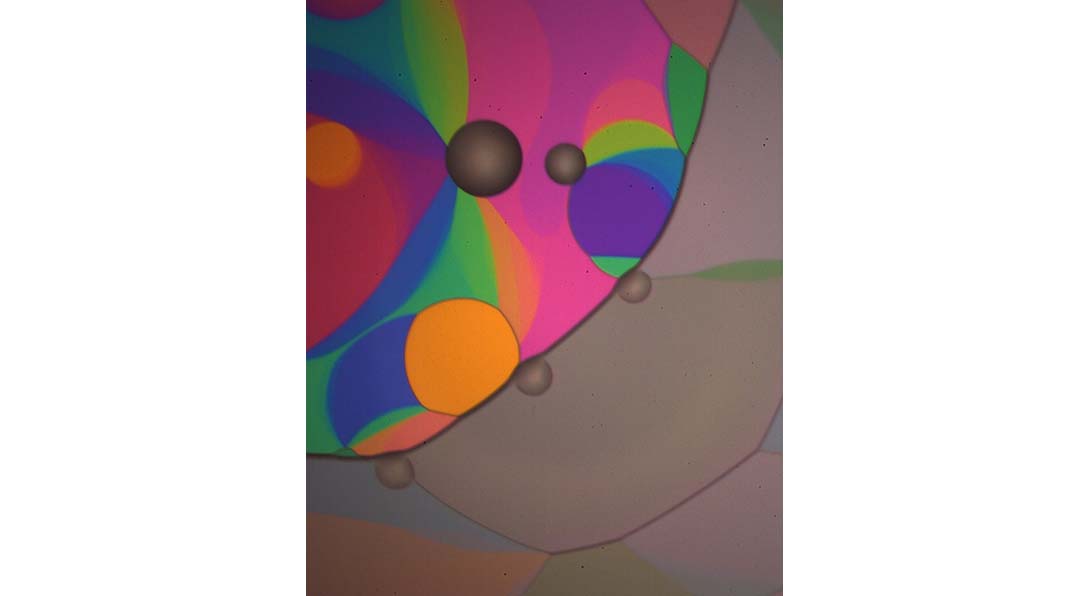 Chrystian Ochoa
Chrystian OchoaColorful Liquid Crystal Foam Film Surface
Submitted by: Chrystian Ochoa
Program: Chemical Engineering
Division: Engineering, Mathematics, and Physical SciencesDescription: Sodium Naphthenates found in crude oils can act as surfactants and self-assemble in aqueous solutions to form liquid crystals. Understanding and controlling the drainage kinetics of thin films is an important problem that underlies the stability, lifetime, and rheology of petroleum foams and emulsions. In this reflected light image of a circular foam film formed with an aqueous solution of sodium naphthenate, the colorful domains are manifestations of regions with different thickness. The film exhibits stratification, manifested here as coexistence of thick and thin regions, and undergoes stepwise thinning. The step-size is correlated with the size and interaction of between sodium naphthenate molecules, and the morphology formed is due to the formation of smectic liquid crystalline phase at such high concentrations of the surfactant.
Finalist
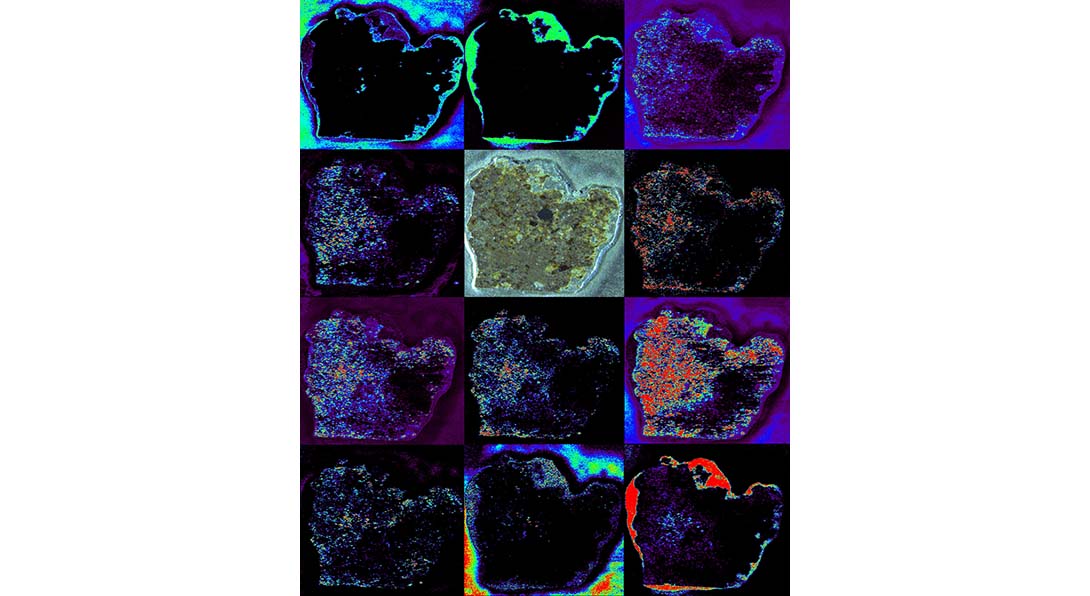 Joey Pasterski
Joey PasterskiPaint by Lasers
Submitted by: Joey Pasterski
Program: Earth and Environmental Sciences
Division: Engineering, Mathematics, and Physical SciencesDescription: In organic geochemistry, particular molecules can indicate what kind of life was in a given environment when a rock was being deposited. Current techniques to analyze molecules in rocks can effectively determine the composition of the organic constituents; however, the preparatory steps necessary prior to analysis (sample crushing, solvent extraction; think extracting coffee from coffee beans) make it impossible to determine the spatial distribution of organic compounds within rocks. Here, we used the mass spectrometry (MS) imaging technique, femtosecond-laser desorption post ionization-MS (fs-LDPI-MS) developed by Professor Luke Hanley in the UIC Department of Chemistry. This approach is used to determine the spatial distribution of organic compounds within a ~160 million-year-old mudstone. The spatial distribution of organic compounds can indicate when and how an organic compound was incorporated into a particular rock (i.e. is it a contaminant emplaced during sampling, or was it emplaced during or after deposition?). Larger implications of this research potentially include determining the timing of emplacement of organic molecules in ancient rocks and, if organic compounds are present in Mars samples, determining when and how they were incorporated into the rocks upon sample return.
Finalist
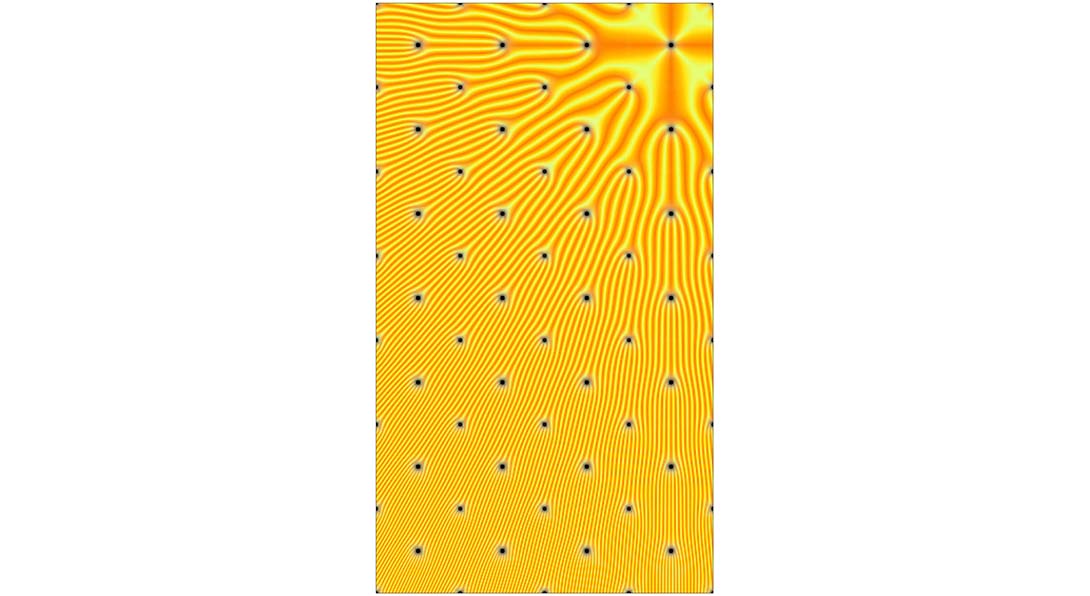 Martin Graham, Eric Mascot
Martin Graham, Eric MascotSunlight in a Superconducting Vortex Lattice
Submitted by: Martin Graham
Co-Entrants: Eric Mascot
Program: Physics
Division: Engineering, Mathematics, and Physical SciencesDescription: Within the field of condensed matter physics, one of the most hotly contested questions asks how to build materials that conduct electricity at room temperature – superconductors. This special phase of matter can transfer energy without resistance, offering a natural way to reduce the need for electricity from fossil fuels. The best candidate materials for this zero-resistance state today host an intriguing array of interesting phenomena, but the one perhaps most concerned with superconduction at room temperature is the magnetic vortex. In a vortex, magnetic field lines penetrate a superconductor and cause the superconducting quasiparticles, known as Cooper pairs, to oscillate and break apart. The breaking down of superconductivity surrounding these vortices is shown—just like it would occur in a superconductor—in my image here. My eventual goal is to predict how nanoscopic measurements can detect these vortices directly, using a special experimental technique called Josephson scanning tunneling spectroscopy. Constructing a model that shows the pictured relationship was the necessary first step toward an experiment to show vortices like this in a real material for the first time. And in a very appropriate way, it sort of looks like sunlight.
Finalist
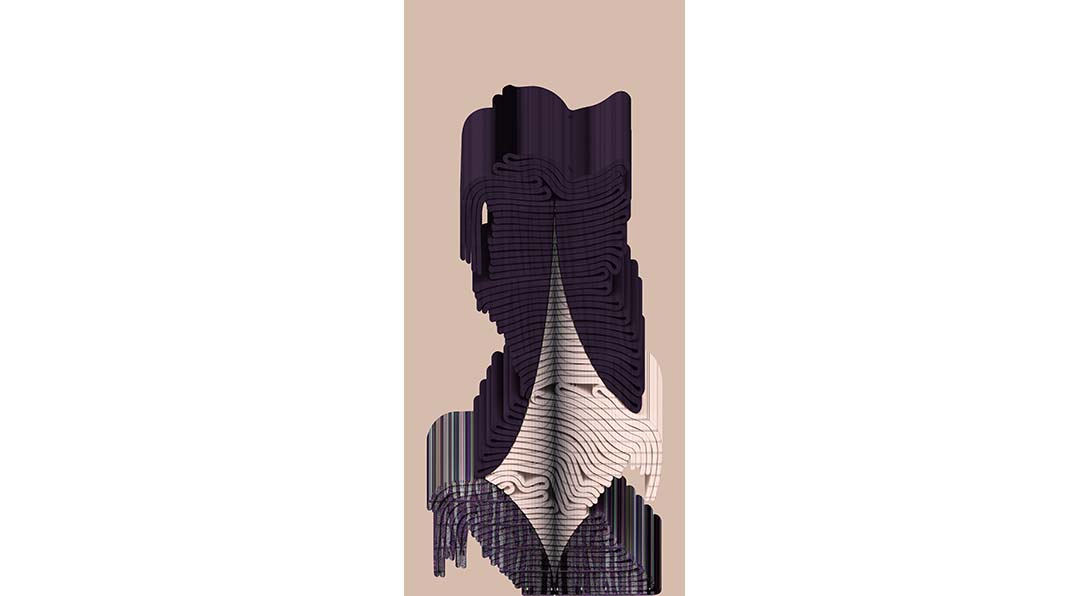 Jeffri Jacobe
Jeffri JacobeFrom Conventions To Compelling Convictions
Submitted by: Jeffri Jacobe
Program: Architecture
Division: Arts and HumanitiesDescription: My research investigates the interior, exterior, and between conditions of architecture through speculative design mediums. By exploring the potentials of architectural conventions i.e. plans, stacks, volumes, profiles, etc. we can redefine these terms to produce artifacts that communicate a new representational tool of our time. This research can be found in my portfolio, a physical manifestation of a redefined medium, where I challenge its use in the architectural field. Rather than using portfolios as an artifact to jump into the working field, my portfolio is an open-source platform directed towards the architectural discipline to debate on architectural conventions, exchange representational techniques, and explore possible mediums. This image comes from the STACKS chapter in my portfolio where I interrogate stacks in architecture and everyday life. The drapes and folds from a stack of towels produce a shape that compels conviction. Similarly, the repeated floors of swaying curtains in the Reliance Building extract a soft material swatch from a solid structure. Stacks are thus defined by repetitive elements that convey difference through excessive piling and absorb material characteristics to allude to three-dimensional traits that aren’t physically present. As a result, a new speculative project is open for debate through this envisioned process.
Finalist
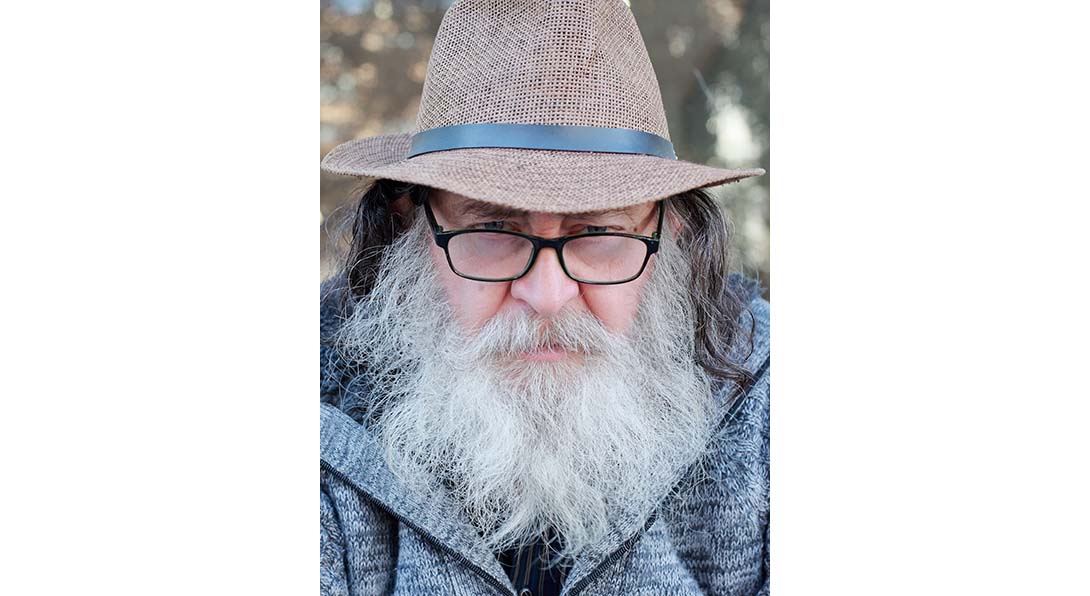 Daniel Sanchez Bataller
Daniel Sanchez BatallerPerson in Santiago de Chile
Submitted by: Daniel Sanchez Bataller
Program: Art History
Division: Arts and HumanitiesDescription: This person in the streets of Santiago de Chile is holding a poster with the message: “Monthly Pension $53,447 [$76 USD]. I pay electric, water, gas. I suffer and my stomach suffers too. Forgive me for begging.” Once a member of the “aristocracy of workers” in the copper mining industry, Oscar early-retired in 1985. His industry, first nationalized by socialist President Salvador Allende, was privatized in 1981 with the new economic model brought by the Chicago Boys after Pinochet’s 1973 coup d’état. The country became a “laboratory of neoliberalism” imposed by military force and the terror of fascism. Decades later, Oscar states his indignation surpasses the shame of exposing his situation speaking up in the streets. My research looks at culture in Chile after the demise of socialism. This image illustrates the broken promise of happiness and the reality of free-market capitalism.
Finalist
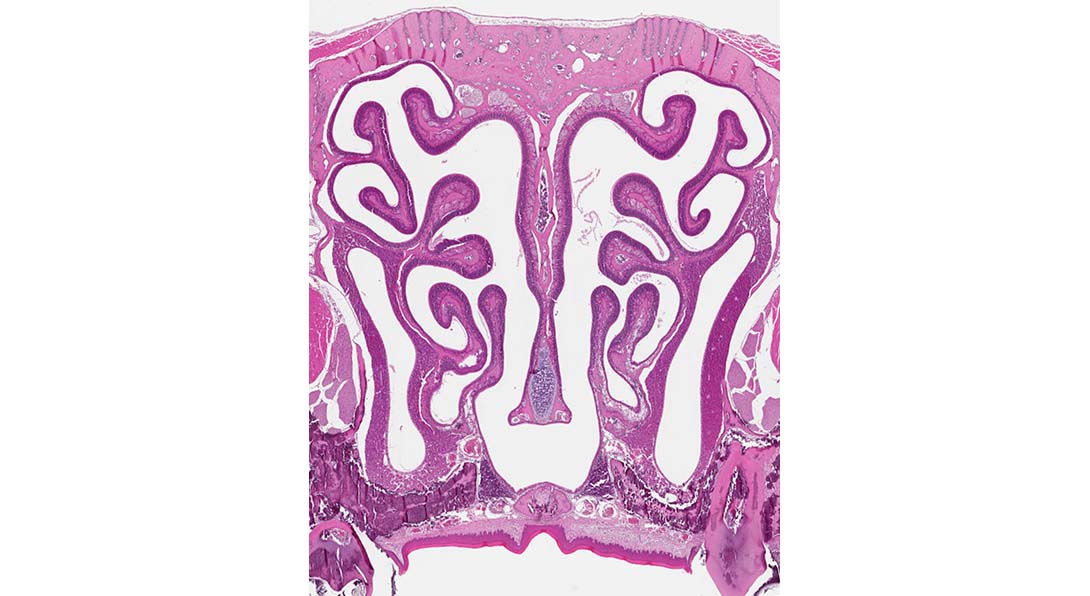 Artemis Gogos
Artemis GogosThe Hidden Maze Behind a Wiggling Nose
Submitted by: Artemis Gogos
Program: Microbiology and Immunology
Division: Life SciencesDescription: These shell-shaped networks of bone, tissue, and air form the murine nasal turbinates—basically the internal workings of the nose. In my graduate research, I hold my pipette up to the wiggling noses of young mice as they breathe in Streptococcus bacteria to colonize these passages. I am studying the importance of different proteins in the ability of these bacteria to colonize the mouse nasopharynx, but I usually only see the exterior—a wiggling nose. When I set off to start examining the interior, the microscopy core helped me to attain this image, which is a cross section of the mouse nose stained with hematoxylin and eosin. When the images were attained, this incredible maze revealed itself, with two small purple triangles in the lower portion that contain the immune cells that interact with the bacteria.
-
First Place
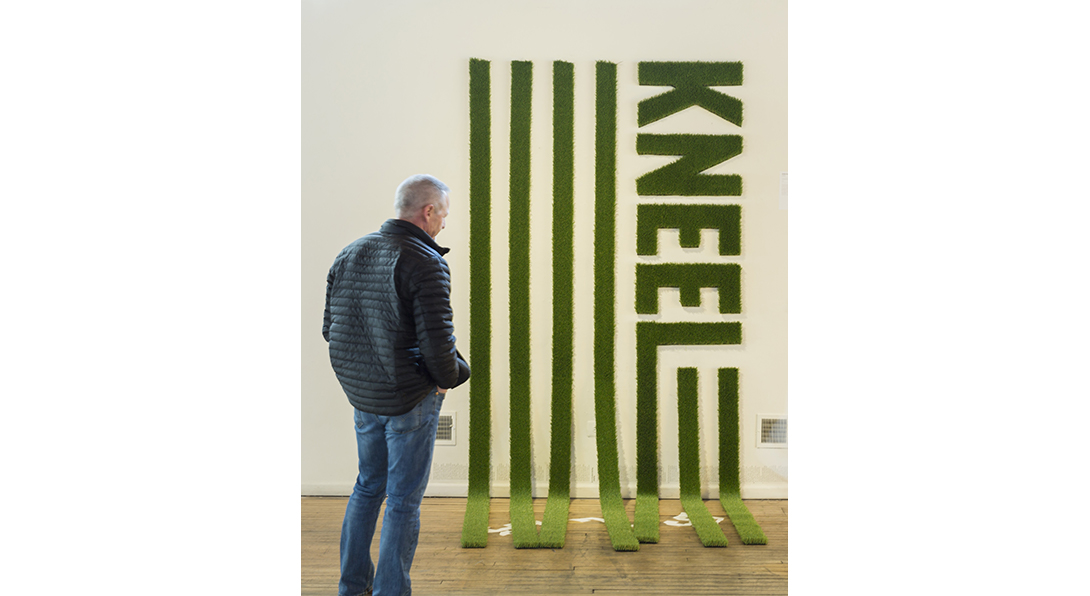 Kaleb Dean
Kaleb DeanKNEEL
Submitted by: Kaleb Dean
Program: Graphic Design
Division: Arts and HumanitiesDescription: This image is from an exhibition called Typeforce 9 in which Chicago designers are encouraged to create works coming out of their research and practice. I’ve been studying typographic forms and materials as they relate to identity at colleges and universities. KNEEL comes out of the 2016 NFL season’s controversy surrounding Colin Kaepernick and presents the authoritarian view of a graphic emblem, their jersey numbers which identify the players, and the official Flag Code in vinyl on the wall.
Second Place
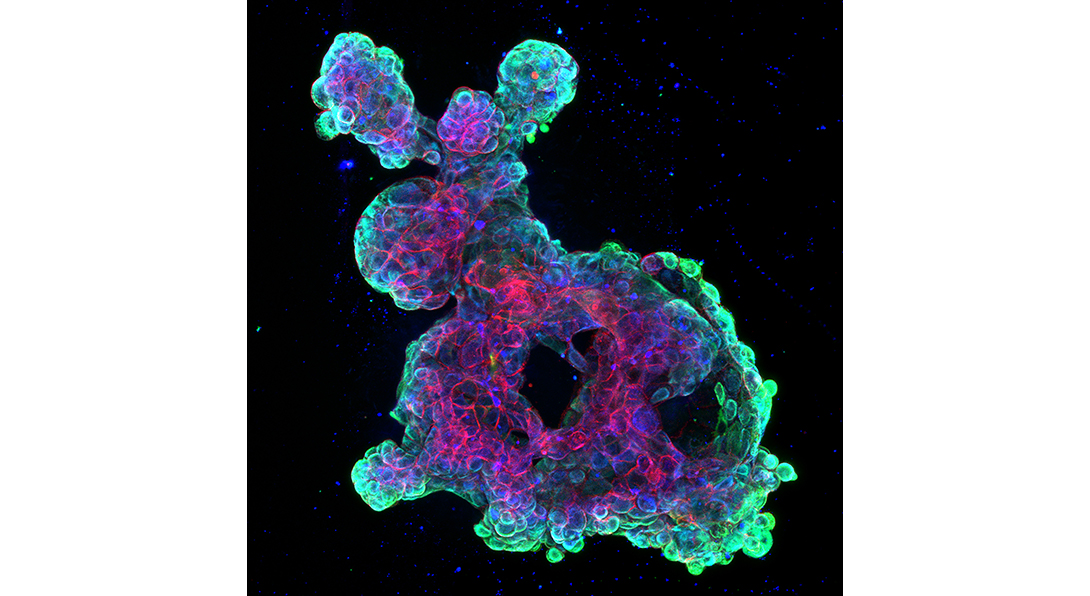 Tara McCray
Tara McCrayNot a cell, not quite an organ
Submitted by: Tara McCray
Program: Pathology
Division: Life SciencesDescription: My research explores how to culture and characterize prostate organoids. These exciting new “organs in a dish” can reproduce the function and morphology of the prostate in a laboratory setting. The cells are obtained directly from the tissue of UIC hospital radical prostatectomy patients. Next, they are grown from single cells in 3D culture conditions to form a miniature model of the patient’s tissue that can mimic the secretory activity of the gland and retain the gene expression of the patient’s organ. The image shown is from our lab. A patient’s cells were expanded into an organoid and then stained to visualize the intricate pattern of ductal branching. The red color stains epithelial cell junctions, the green and blue colors show two different cell populations of epithelial cells. This cell culture technique is the focus of my thesis and is what I believe to be the future of personalized medicine. Organoids have to potential to be used prior to therapy as a neoadjuvant screening of drugs to predict patient response to treatment. 3D culturing of patient samples exemplify the bench to beside goals of our university.
Third Place
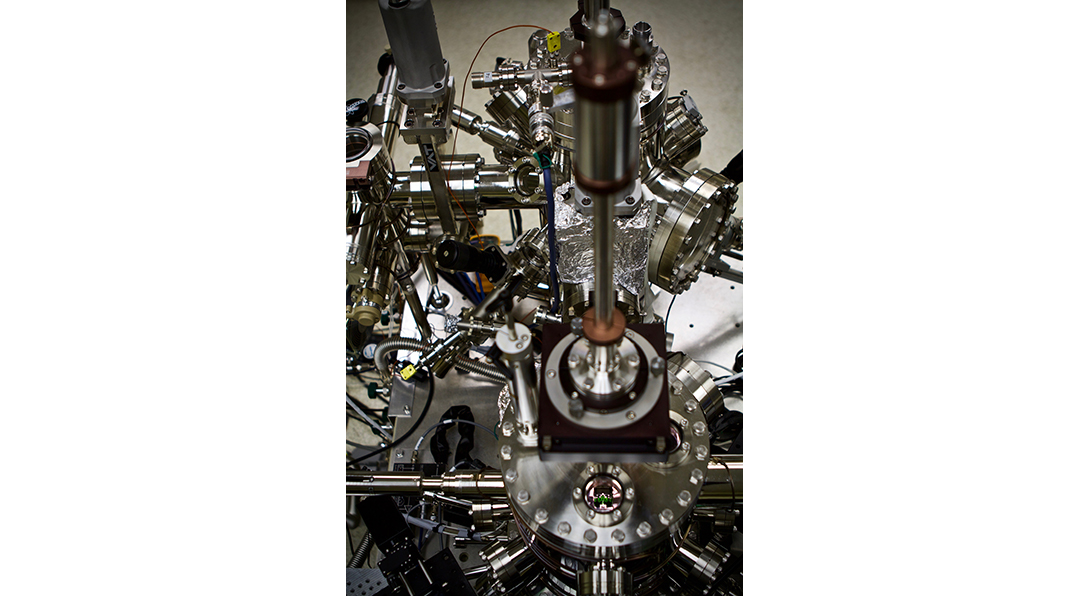 Jeremy Schultz
Jeremy SchultzIn a Small Window
Submitted by: Jeremy Schultz
Program: Chemistry
Division: Engineering, Mathematics, and Physical SciencesDescription: Initially the instrument I use in my research is disorienting. It is a mass of jutting metal parts, nuts, bolts, and viewports akin to a diving bell. However, every part was engineered to serve a specific purpose, creating a supremely clean vacuum environment. Despite the instrument’s size, it is used to study the interactions of the vibrations of individual molecules with light. Light is effectively confined at the apex of an atomically sharp metal tip located imperceptibly close to molecules on a surface. The actual experiment is barely visible through the small window in the bottom right of the image, where the green of the laser light illuminates the tip and sample. It is so easy to lose a sense of scale over the months and years of research. But it is critical to always retain an appreciation for the work previously done by others and where current research may contribute to ever developing technologies and methods.
Honorable Mention
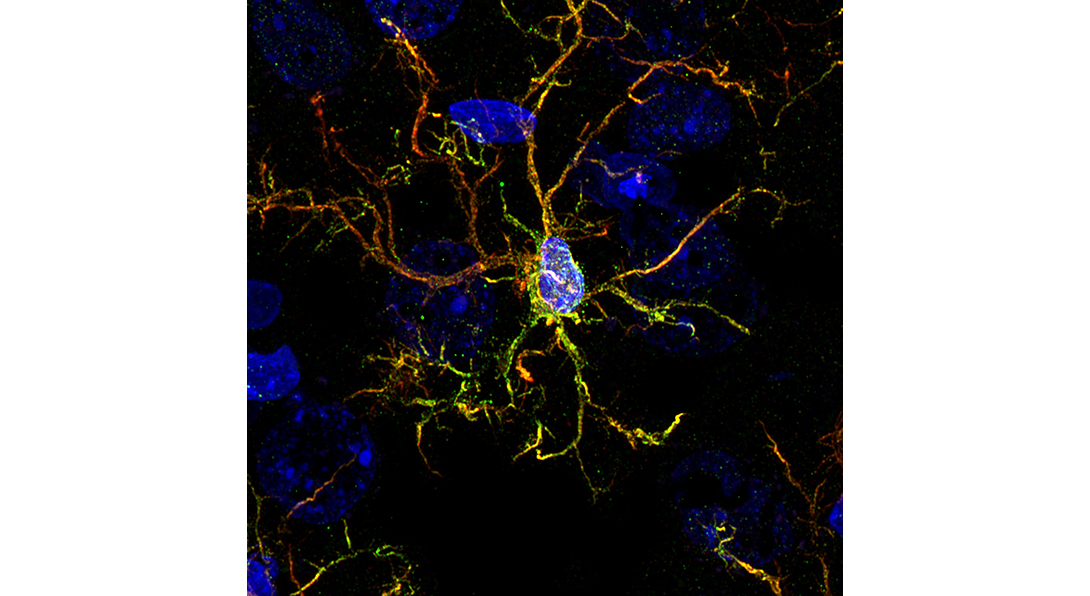 Matthew Tobin
Matthew TobinStroke Activated Microglia
Submitted by: Matthew Tobin
Program: Neuroscience
Division: Life SciencesDescription: I study the interaction between inflammation and neurogenesis following ischemic stroke. More specifically, I am interested in the interplay between the response of microglia (the resident immune cells of the brain) to stroke and how that impacts the ability for neural stem/progenitor cells to provide long-term functional recovery following stroke. I am also interested in the potential for bone marrow-derived mesenchymal stem cells to alter the response of both microglia and neural stem/progenitor cells to promote and enhance functional recovery after stroke. The image here depicts a microglia from the brain of a rat that was given a stroke and then treated with mesenchymal stem cells. The cell is stained for Iba1 (green) which marks all microglia, CD68 (red) which labels specifically activated microglia, and for DAPI (blue) which stains all cell nuclei. Following mesenchymal stem cell treatment, rat brains have substantially fewer activated microglia and animals demonstrate a more rapid and sustained functional improvement over animals that do not receive treatment.
Honorable Mention
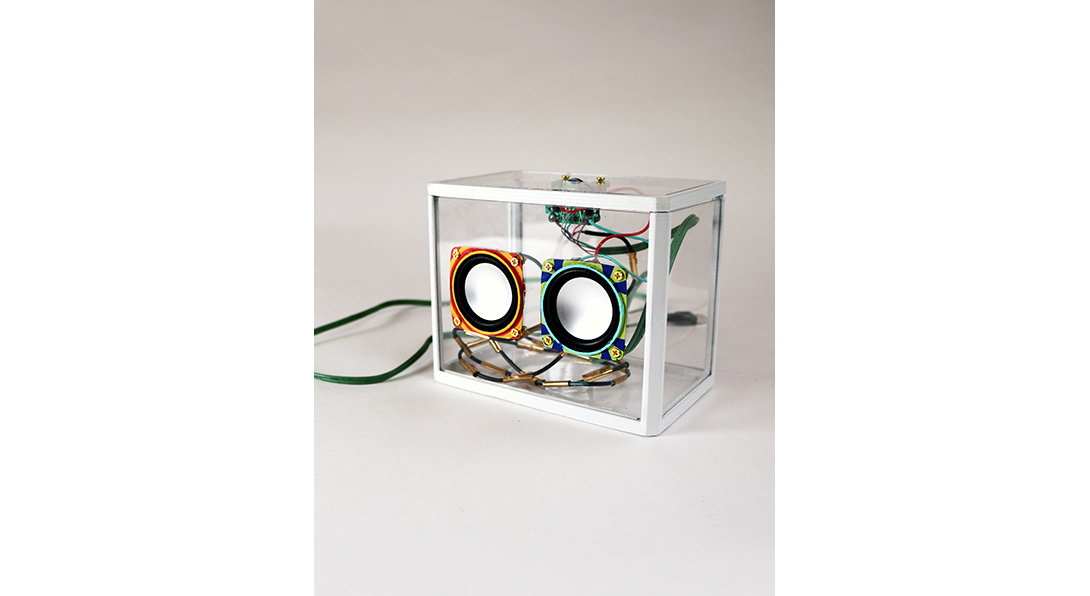 Nuzhat Arif
Nuzhat ArifResonant Design: The Transparent Speaker
Submitted by: Nuzhat Arif
Program: Industrial Design
Division: Arts and HumanitiesDescription: I read Jonathan Chapman’s Emotionally Durable Design and was appalled to learn that 80% of objects get thrown out into landfills because people aren’t able to form a strong enough emotional bond with them. Landfills often cannot provide the right environment for microbes to be able to break material down, so landfills keep piling up with things. As a designer, I consider the quandary of consumerism, pollution, and short-term attachment to material goods. Audio speakers are often marketed on their external form. But as I was researching speakers, I became more interested in their internal components: the feat of engineering that creates sound. I wanted to flip the focus in my design by highlighting the internal components and minimizing the speaker shell. I chose to create a simple clear box that is almost like a museum case; it highlights the functional aspects of the speaker as a technological work of art. My hope is to extend the life of the speaker by designing for emotional connection, which in turn leads to longer use and, therefore, improved conservation.
Honorable Mention
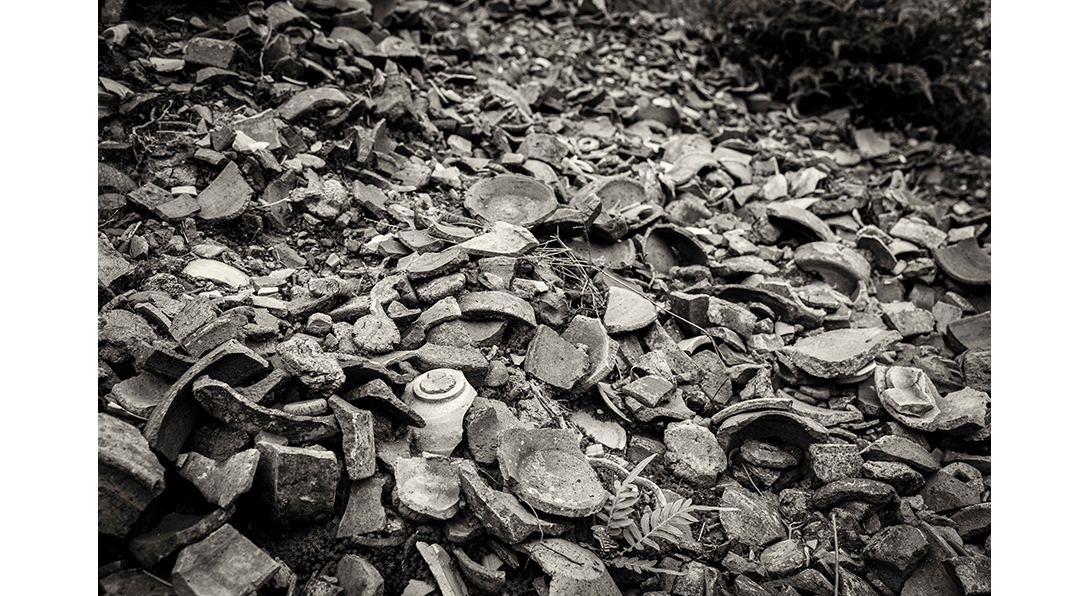 Wenpeg Xu
Wenpeg XuFiring for the World
Submitted by: Wenpeg Xu
Program: Anthropology
Division: Behavioral and Social SciencesDescription: This image depicts the debris of a 12th-century dragon kiln at Dehua in Southeast China. Thousands of porcelain shards and broken saggars on the site reveal an industrial scale of porcelain production in the preindustrial era. Located in the coastal mountain region, this kiln was also indispensable to the pre-modern global market since its products were made exclusively for export. In the summer of 2017, I conducted an archaeological survey at Dehua and found dozens of export-oriented kilns of this scale in an area of 100 square miles. By analyzing the homogeneity and heterogeneity of porcelain products within and between kilns, I am going to examine the production strategies used by local manufacturers to compete in the pre-modern global market. This research will expand the understanding of the historical development of mass production and globalization.
Finalist
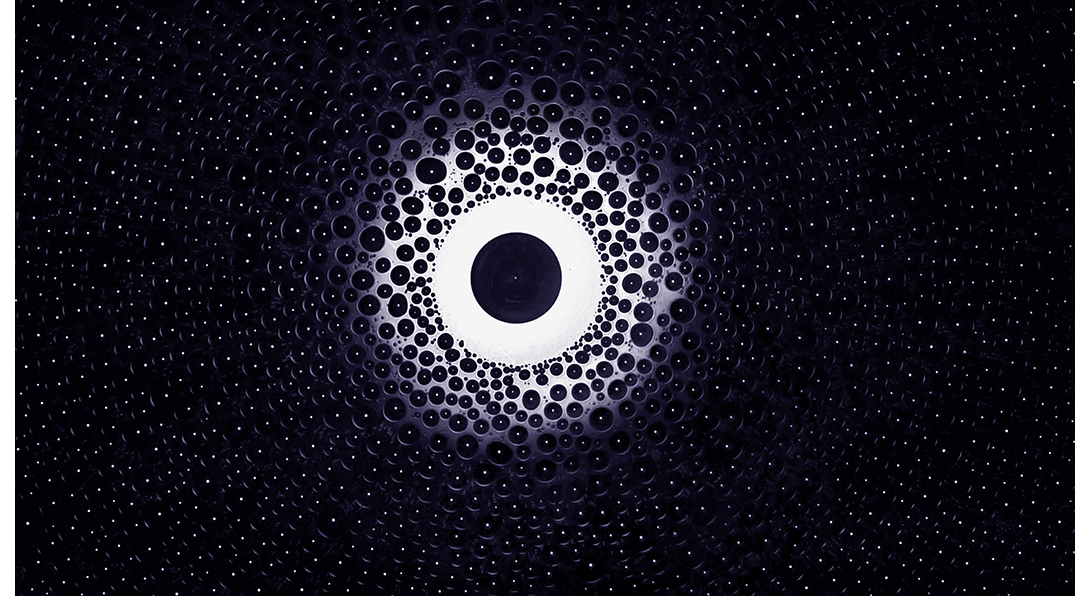 Rukmava Chatterjee
Rukmava ChatterjeeImage of Mhysa
Submitted by: Rukmava Chatterjee
Program: Mechanical Engineering
Division: Engineering, Mathematics, and Physical SciencesDescription: Come winter and the environment is draped in a snowy blanket, immensely diverse yet infinitely monotonous. But there’s more to this icy monochromatic beauty, with the ubiquitous menace of ice engendering slippery roads. Rock salts are the common choice of chemical deicers, used to steer clear of icy sidewalks and roadways. These salts work by lowering the freezing point of water, precluding ice formation. And it is this working mechanism of salt which the current image (captured as a part of my ongoing doctoral research on anti-icing systems) intends to convey. To demonstrate this, I carried out an experiment with a single sodium chloride salt crystal subjecting it to an extremely humid and frigid atmosphere; conditions favorable for icing. The central salty drop remains unfrozen, untouched by virtue of an annular region of inhibited condensation which occurs due to a variation of water vapor concentration above the salty drop and neighboring population of super-cooled water droplets. And this is how salts prevent ice formation for extended periods of time.
Finalist
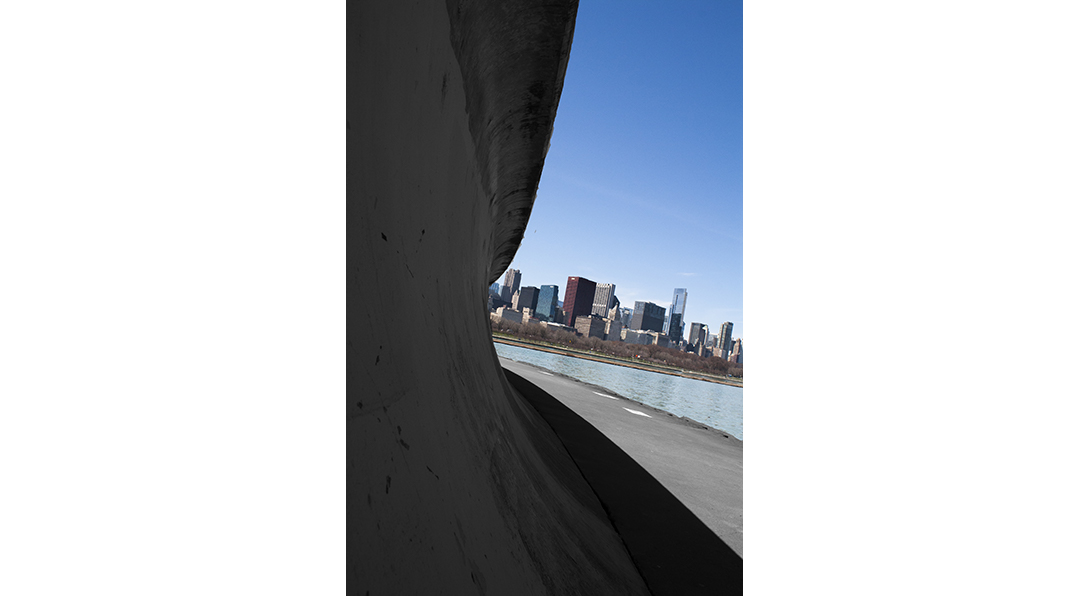 Alexander Jendrusina
Alexander JendrusinaLook Away
Submitted by: Alexander Jendrusina
Program: Psychology
Division: Behavioral and Social SciencesDescription: My research examines the relationship between discrimination and mental health, which is challenging to safely and humanely photograph. I encourage this piece to be interpreted abstractly as I intentionally symbolize many layers of my work. The left side of the photograph is primarily black and white, focusing on a rugged concrete wall juxtaposed against the magnificent, colorful Chicago skyline. This clear divide in the photo represents discrimination and mental health. Discrimination creates divides among people and provides some with opportunities while leaving others out. Furthermore, discrimination has been strongly linked to depression, a condition that also colors a person’s perspective and is represented by motifs of light and dark. The camera angle results in a warped view of the city, symbolizing the pain endured and less understood perspective from those experiencing discrimination and depression. The viewer’s eye can’t help but first notice the skyline, then the wall, before being drawn back to the skyline. Returning the viewer’s eye toward the aesthetically pleasing is symbolic of the historical difficulty society has speaking about discrimination and mental health; that is, we look away.
Finalist
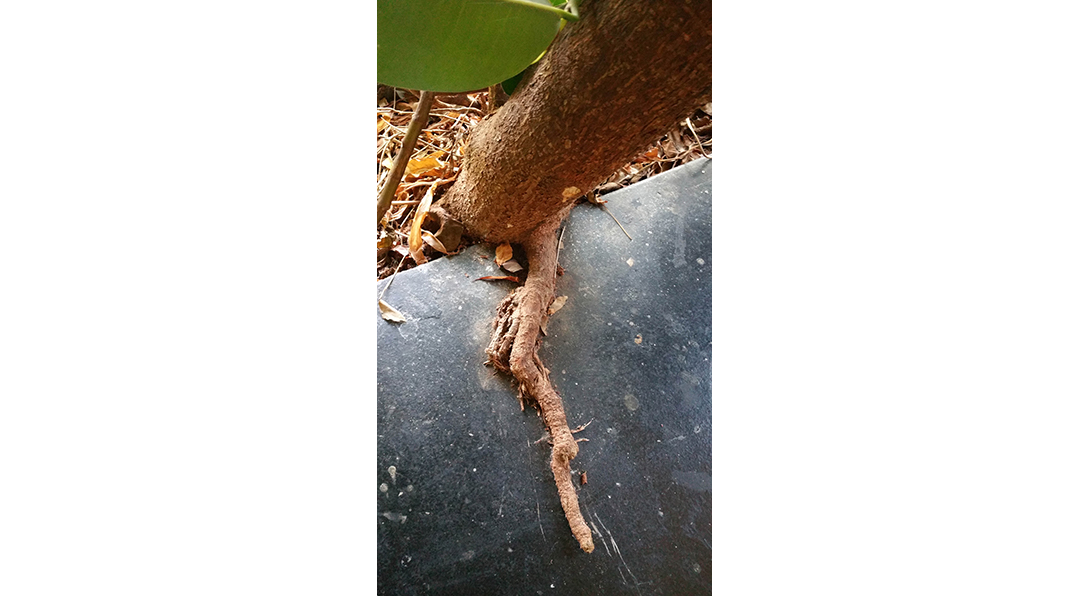 Martin Murungi
Martin MurungiEnvironment
Submitted by: Martin Murungi
Program: Architecture
Division: Arts and HumanitiesDescription: I study how our natural and built environments tend to compete over ownership of available spaces. I took this image of a floor when my graduate class visited The Ford Residence in Aurora, Illinois built in 1948. The home owner decided not to cut the intruding root, but instead they let it grow and freely encroach into the house. This situation demonstrates not only this eternal conflict of natural versus built environments, but also how it can sometimes be okay to allow these to co-exist and even compete without external (human) interference.
Finalist
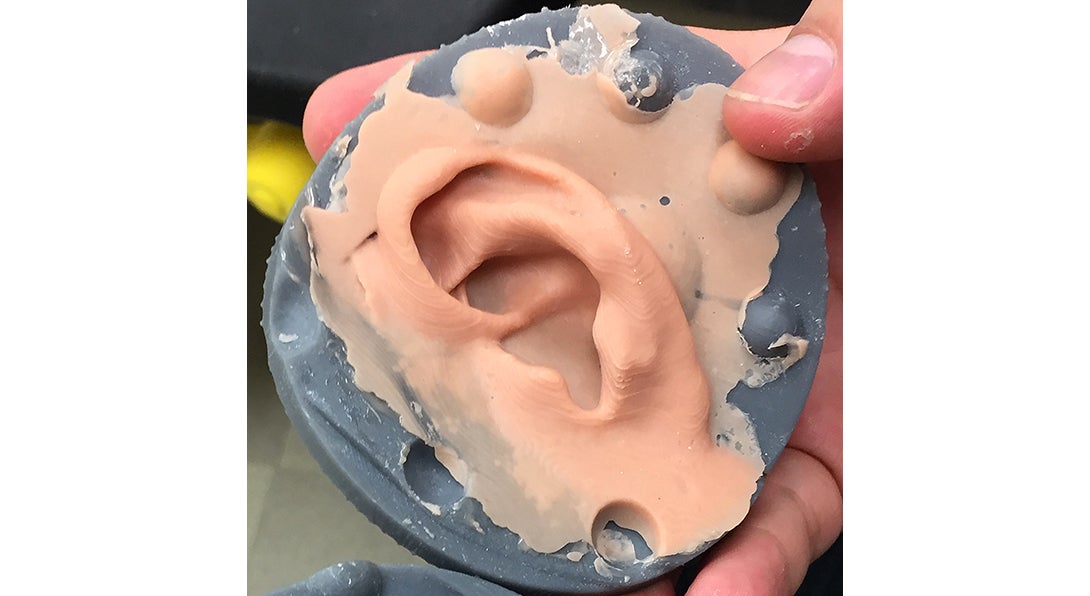 Yu-Hui Huang
Yu-Hui HuangAdvanced 3D printed casting molds for facial prostheses
Submitted by: Yu-Hui Huang
Program: Clinical and Transitional Science
Division: Life SciencesDescription: The traditional fabrication process of facial prostheses is laborious and expensive. Applying new technologies to stages of the fabrication process may provide a way to improve the quality of the prosthesis while reducing the cost and time required. Traditional mold-making techniques rely heavily on the sculpting ability of clinicians to create forms that are realistic and proportionate to the existing patient anatomy. Computer-aided design and manufacturing which employ medical data offer benefits to patient treatment by contributing better outcomes in prosthetic fabrication. This report demonstrates the use of a 3D technological pathway for virtual casting mold design through prosthesis fabrication for a silicone auricular prosthesis. The auricular prosthetic mold is modeled using the patient’s medical scan, designed in a 3D modeling software, and printed with a desktop 3D printer. Medical grade silicone is then cast and cured in the 3D printed mold. Utilizing a digital workflow, soft tissue prostheses with complex anatomy can be fabricated more accurately for less time and resources. Most importantly, the implementation of 3D technology and printing in prosthetic fabrication can improve patient satisfaction.
2020 1st Place Moving Image Category Heading link
Tardigrades: Surviving Water Loss
Submitted by: Paul Veach
Program: Biomedical Visualization
Division: Life Sciences
Description: For my research, I sought to explore how tardigrades are able to survive desiccation and water loss. I created this animation to offer an adventurous exploration into these microscopic animals’ fascinating abilities. The animation depicts the molecular mechanism that allows tardigrades to enter a tun state by producing matrices in their cells, protecting them from desiccation. The narrative guides the viewer through the story and molecular mechanisms, making it easy to follow and providing an exciting visual insight into tardigrades.
2020 2nd Place Moving Image Category Heading link
Calm Before The Storm
Submitted by: Navid Saneie
Program: Mechanical Engineering
Division: Engineering, Mathematics, and Physical Sciences
Description: When a liquid drop comes close to a hot surface with a temperature above the liquids’ boiling point, we expect to observe a behavior that resembles the liquid boiling. However, if the surface temperature is significantly higher than the boiling point, the evaporation rate of the liquid drop becomes high enough that it creates a vapor cushion below the droplet preventing any contact between the liquid and the substrate. This phenomenon, known as Leidenfrost effect, represents a very low rate of heat transfer from the hot surface. During my research at UIC, I’ve studied the behavior of individual droplets after contacting superheated microstructured surfaces. With the goal of understanding and recognizing the dominant heat transfer mechanisms during the droplet impact, I’ve fabricated microstructures to systematically study the boiling transitions inside an impacting liquid droplet. This video is explaining a very interesting incident at which the droplet shows an explosion behavior after it contacts a substrate with a dense pattern of fabricated microstructures. During this explosion, even though the droplet shows a similar behavior to when it boils, boiling is suppressed, and the explosion is not a sign of efficient heat transfer. Recognizing this behavior is vital to avoid any possible calamities in power plants and industries in which cooling hot surfaces is critical.
2019 1st Place Best Moving Image Heading link
HiVolt: A Rapid HIV Viral Load Test
Submitted by: Dani Bergey
Program: Biomedical Visualization
Division: Life Sciences
Description: My research at UIC has focused on using multimedia techniques (e.g. animation) and visual design principles to effectively depict complex biomedical processes and engage audiences of different biomedical backgrounds. This particular animation was created in collaboration with a biomedical engineering lab at the University of Washington (UW) in Seattle. Here, I created an animation about a novel diagnostic device that measures HIV viral load. This animation required the effective use of many advanced multimedia techniques that I learned in the past year in UIC Biomedical Visualization animation courses, including: particle systems, physics simulations, AfterEffects animating and compositing, and animated materials (particularly apparent during the simulation of HIV particle lysis). This animation will be used in seminar settings to more effectively explain a complex, novel biomedical engineering topic to scientists in the field of diagnostics, engineering, and infectious disease.
2019 2nd Place Best Moving Image Heading link
Circle of Defense
Submitted by: Kate Vergara
Program: Community Health Sciences
Division: Life Sciences
Description: Born out of my PhD dissertation, I am producing a documentary film entitled, “Circle of Defense: a documentary on community health workers in Nigeria and Sierra Leone.” My UIC School of Public Health PhD dissertation “What’s after polio? Priorities & Adaptability in Angola, Ethiopia, Kenya, Nigeria, Somalia, and South Sudan” focuses on legacy planning for global polio eradication programs. In this video footage, I wanted to highlight the critical role that community health workers play in addressing health burdens worldwide and how the trained polio workers should be utilized to address other public health outcomes. The footage in my moving image submission was shot in northern Nigeria and Sierra Leone in November of 2018 while I was writing my dissertation. It first shows community health workers in Nigeria, a high-risk polio country. Second, it shows polio community health workers in Sierra Leone who task-shifted to address the unprecedented Ebola outbreak of 2014-16. Their engagement in their communities, spreading vital health education messages, identifying suspected Ebola cases, tracing Ebola contacts, and changing traditional burial practices attributed to changing the projection of the outbreak and saving thousands of lives.
2019 Honorable Mention Moving Image Heading link
Macrophages in Wound Repair
Submitted by: Julia Bendon
Program: Biomedical Visualization
Division: Life Sciences
Description: Animation has become an increasingly popular resource in schools for conveying complicated, dynamic biological ideas. Slideshow presentations, however, remain the chief form of media used to teach undergraduate college students. This research compared the ability of this animation with that of a slideshow presentation to teach undergraduate college students about macrophage phenotypes in wound repair. The content for this animation was created in conjunction with Dr. Timothy Koh of the College of Applied Health Sciences at the University of Illinois. The results of this study were statistically significant and consistent with my hypothesis that students who watch the animation will score higher on an assessment of the content than students who view the slideshow. Comparing the efficacy of different types of educational media is an important step to help improve undergraduate students’ learning and comprehension of complex scientific topics.
2018 1st Place Best Moving Image Heading link
Visualization of an Australopithecus aferensis specimen: Implications for functional foot anatomy
Submitted by: Eleanor Milman
Program: Biomedical Visualization
Division: Life Sciences
Description: This is an excerpt from my Master’s Project Research in Biomedical Visualization. The purpose of this project was to explore visual and technological strategies in creating an animation about the fossils of human ancestry. Working in collaboration with paleoanthropologist Dr. Zeray Alemseged at the University of Chicago, I reconstructed, modeled, and animated the foot of the Dikika Child fossil, also known as “Selam” or “Lucy’s Child.” This individual is the youngest early hominin specimen in the human fossil record, making her fossil essential in uncovering the history and evolution of our unique human characteristics. In particular, I explore how different features of the foot anatomy can be linked to the development of upright bipedal locomotion in humans. Using CT slices, I compiled 2D image data and used it to create 3D models of each skeletal feature. I then retouched the 3D surface of the models and applied lights and materials to them. I then animated them to reveal different important relationships. For comparison, I also completed the same process with a juvenile human specimen. This project not only facilitated the visualization of important paleoanthropological specimens, but it also fostered a relationship between the Biomedical Visualization department at UIC and the Organismal Biology and Anatomy department at the University of Chicago.
2018 2nd Place Best Moving Image Heading link
Lumenote : A Generative, Data Driven LED Music Box
Submitted by: Gerard Mayer
Program: Industrial Design
Division: Arts and Humanities
Description: Lumenote is a LED music box that generates an endless, unique music composition based on different data sets to express the status of a topic of interest through light and sound. Instead of mechanical chimes, notes are created using programmable color LED lights which are interpreted by color sensors to play these notes through the speakers using an Arduino based synthesizer. This semester I’ve been researching the current state of music education in US public schools, using data from over 1200 schools across the United States. This research has shown that schools with the highest poverty concentration have 66% less music teachers and give students 15% less access to music. That said, these music teachers collaborated 18% more with teachers of other academic subjects, making connections to improve their student’s understanding of both topics. Lumenote contains an algorithm that uses these data sets to create notes with varying colors that embed music composition parameters like pitch, note range, chord type, and effect amount into each LED. Lumenote creates an opportunity for a non-intrusive news update on a variety of topic interests, creating a pleasant soundscape from “Big Data”.